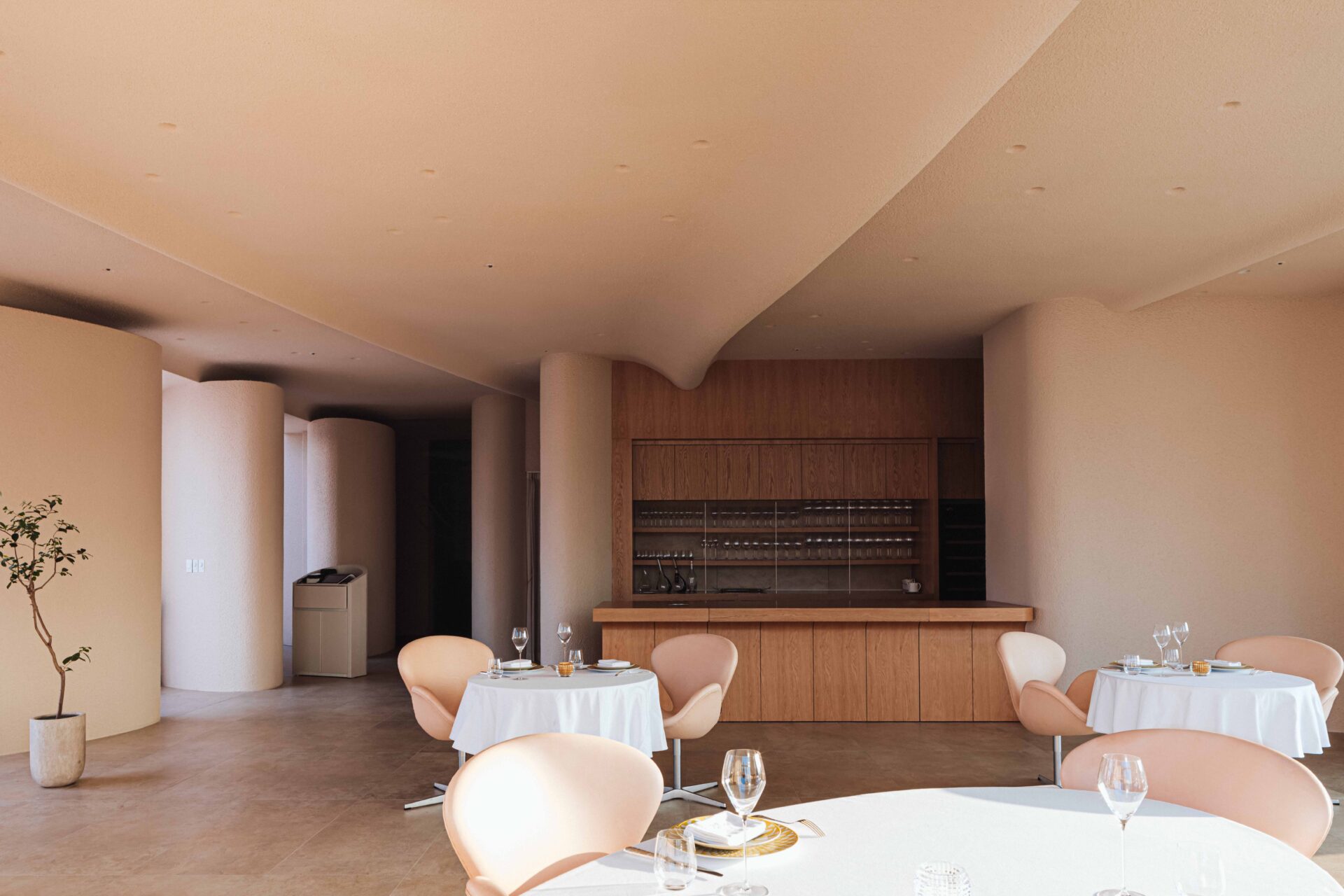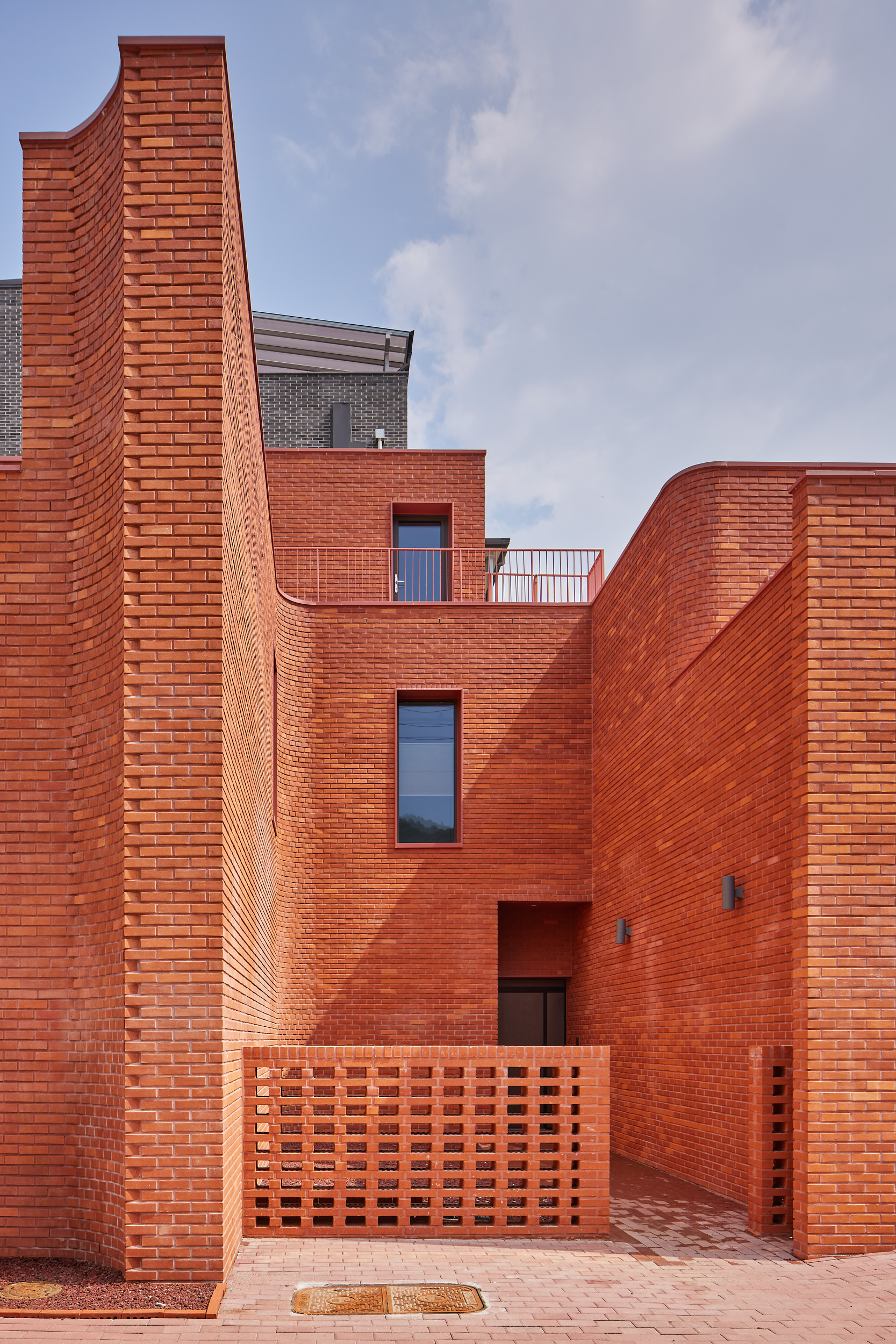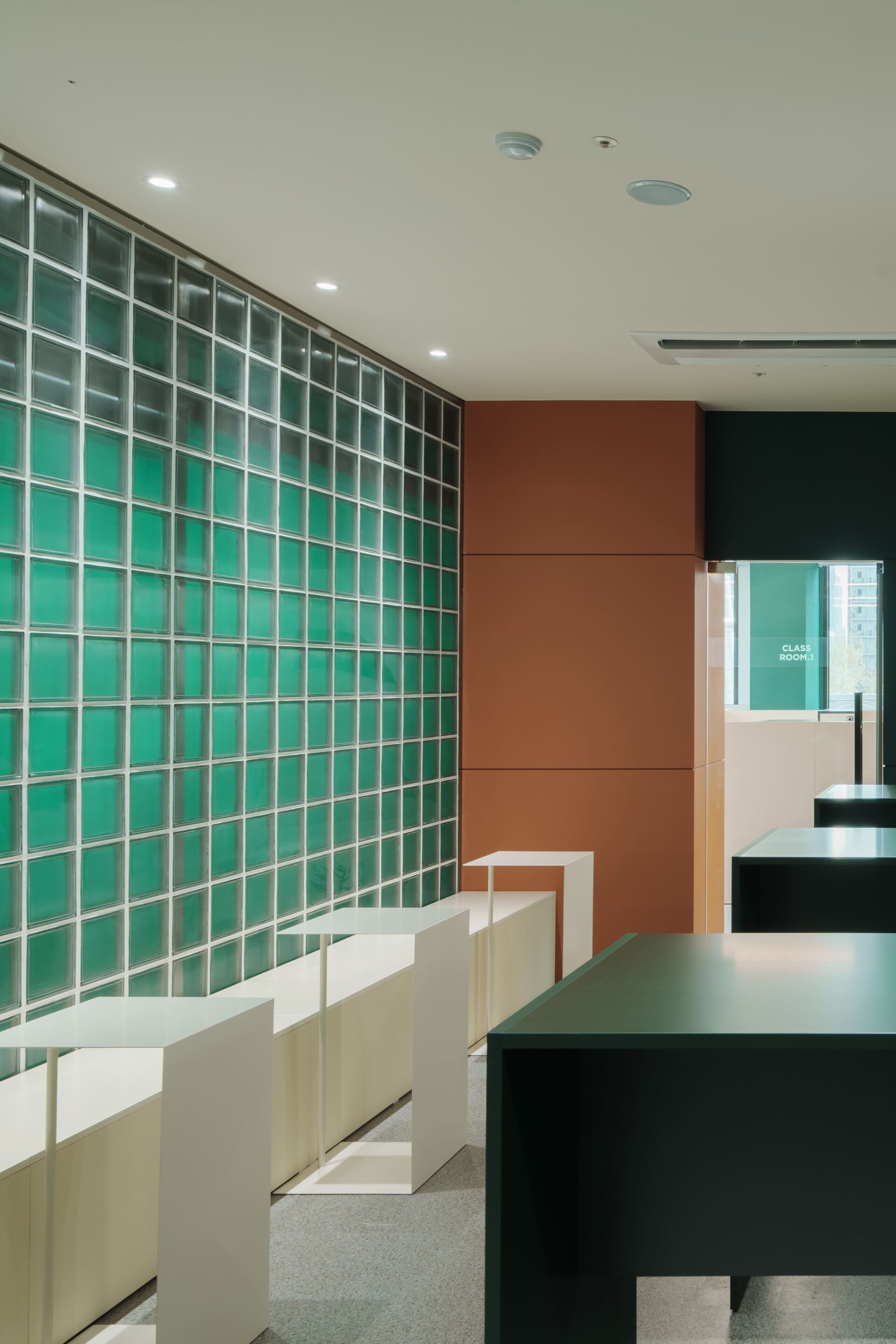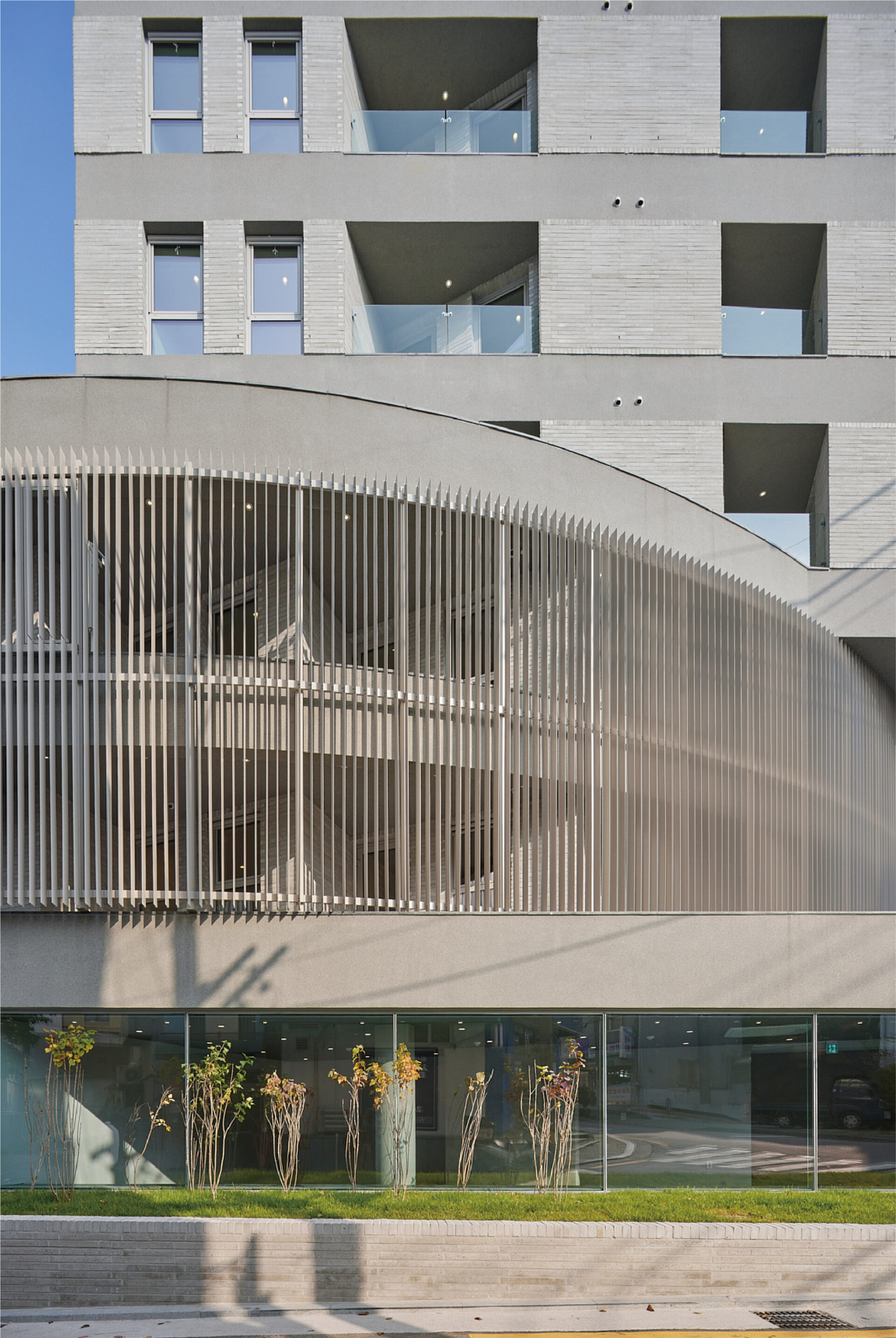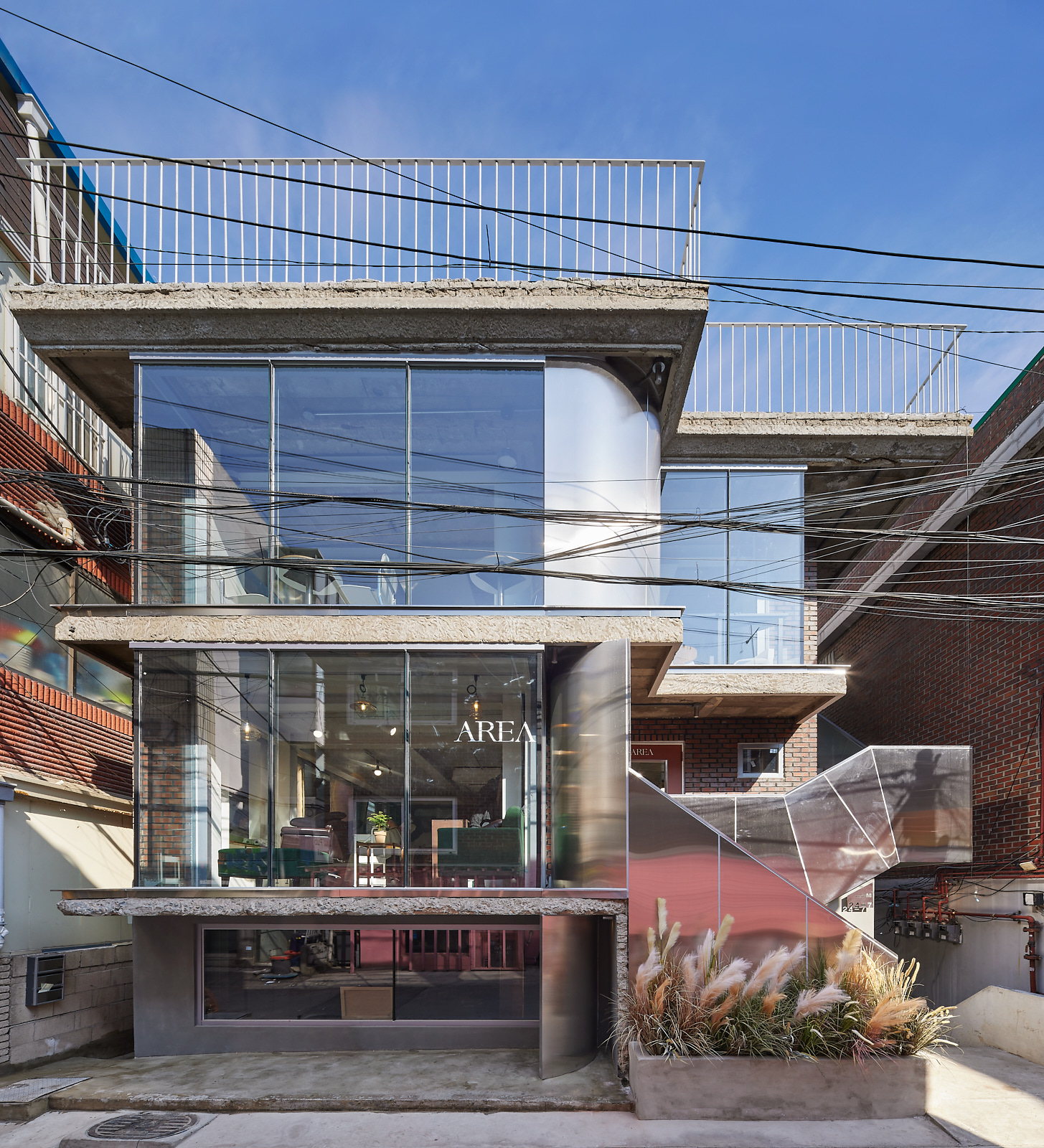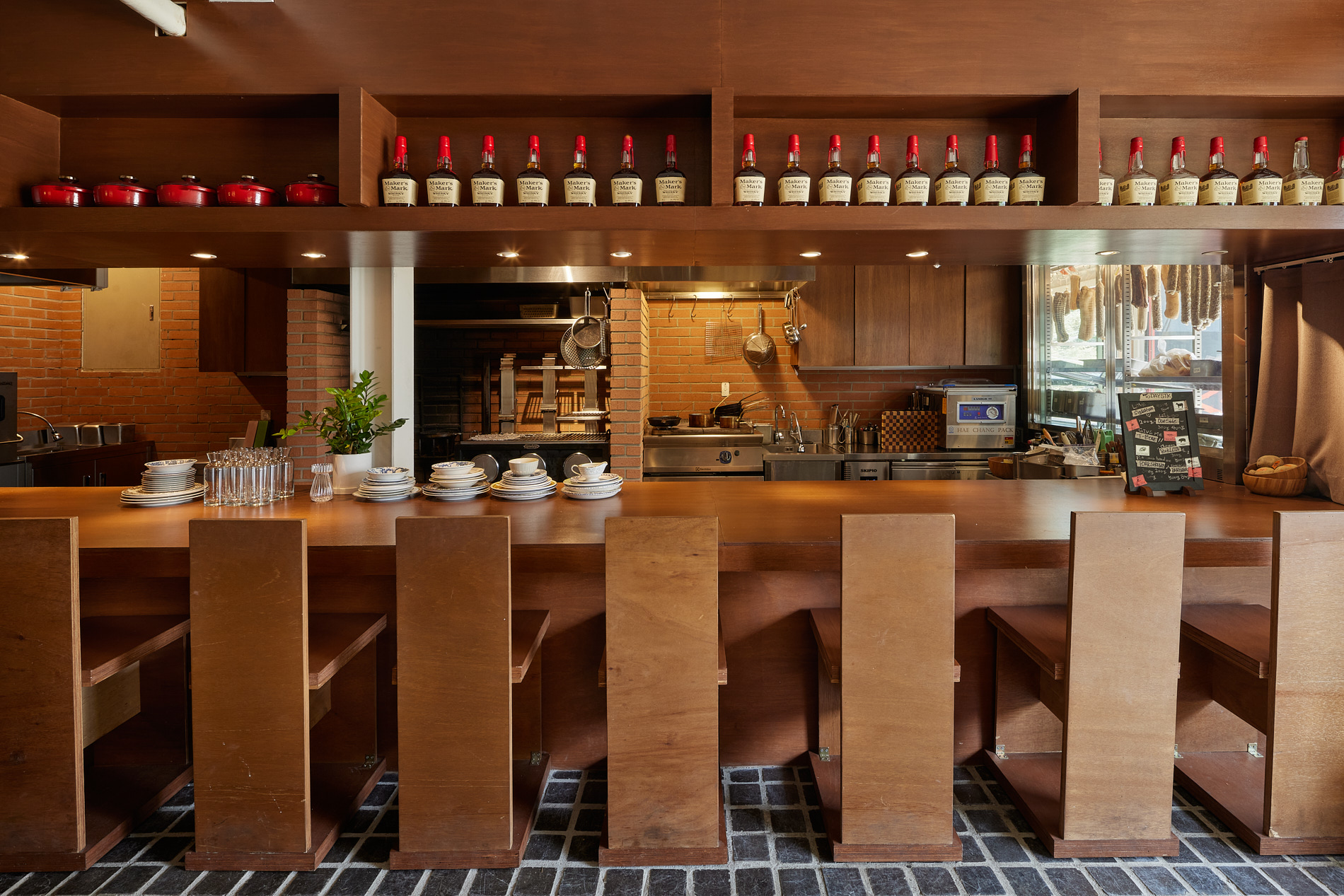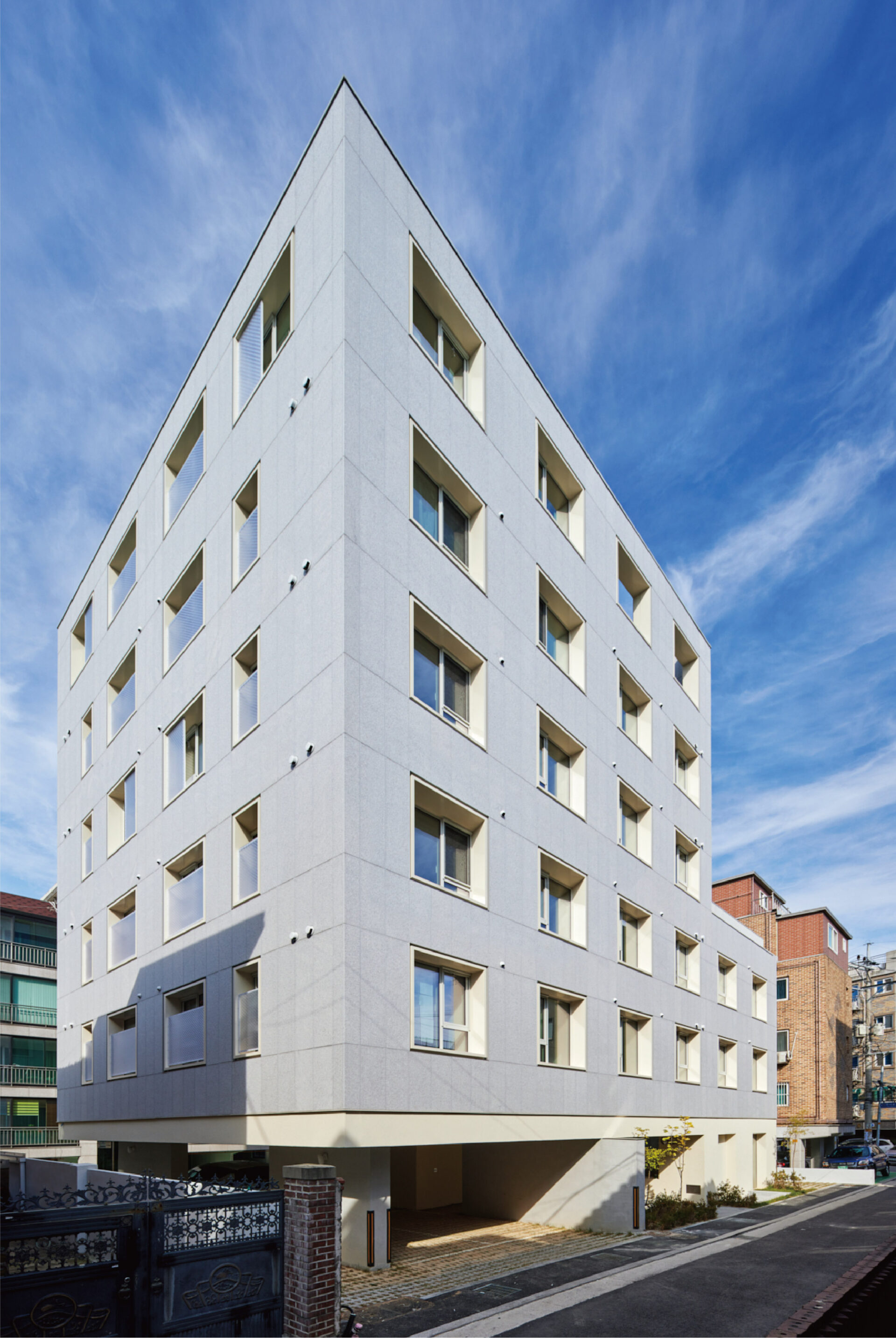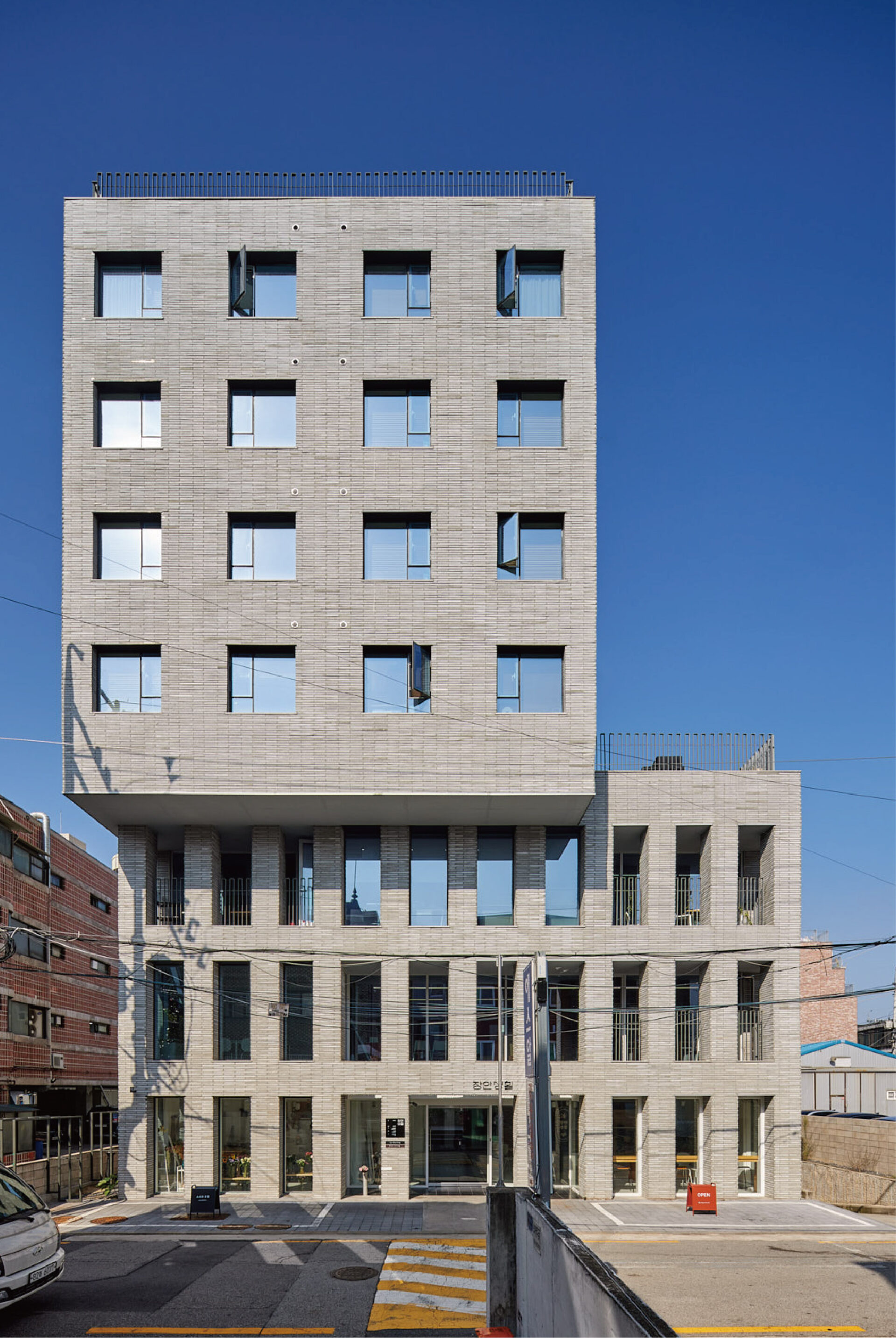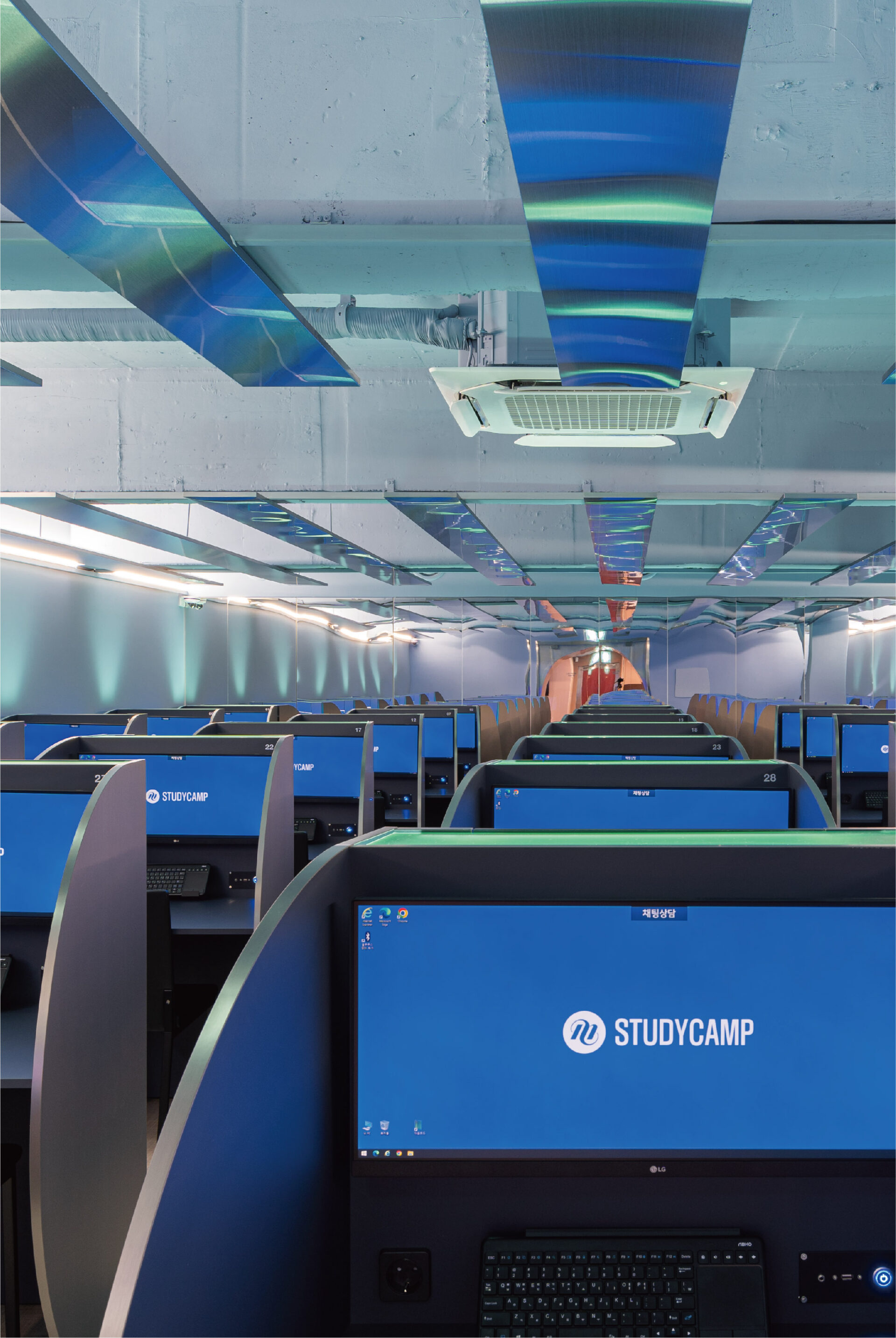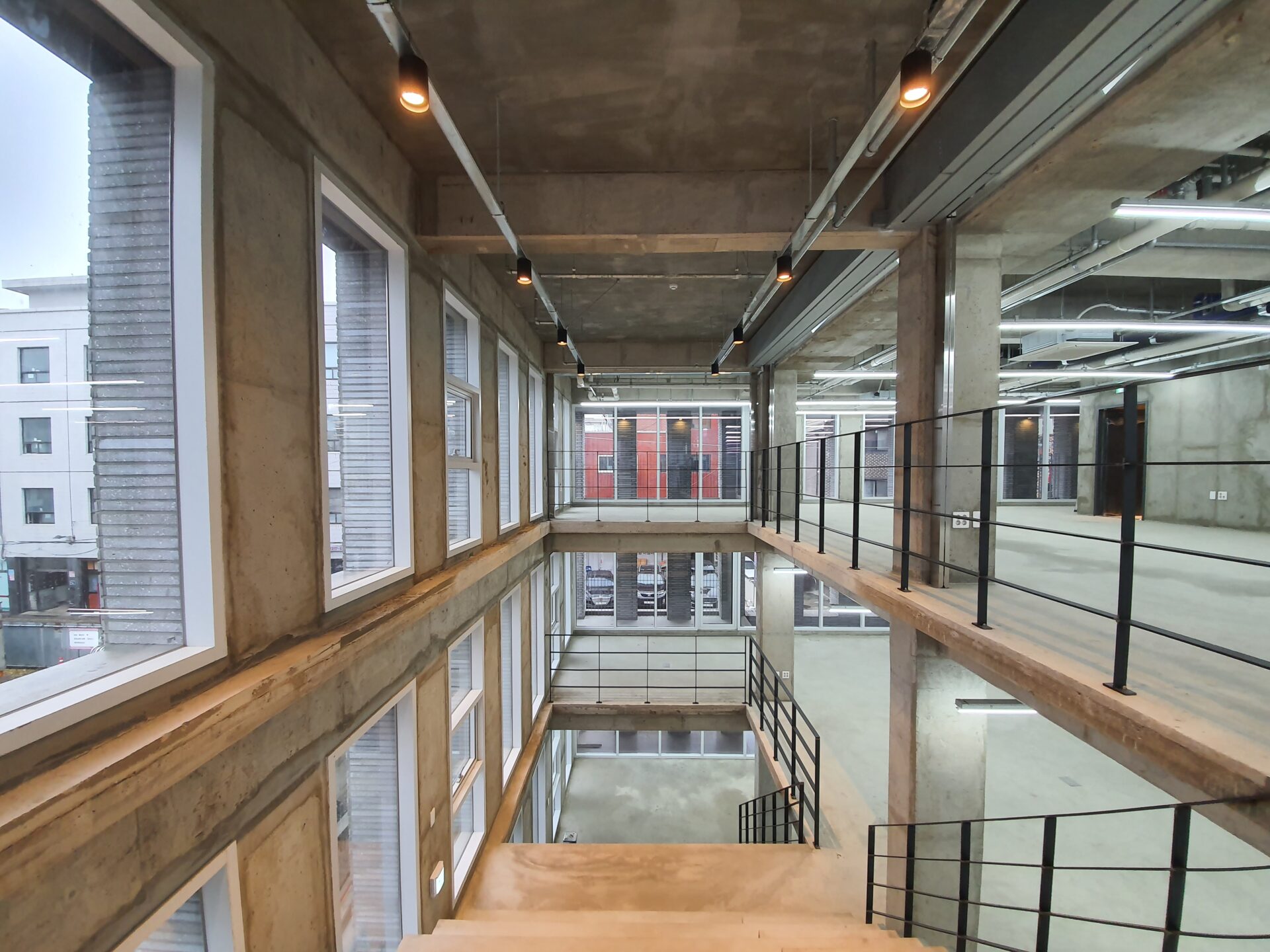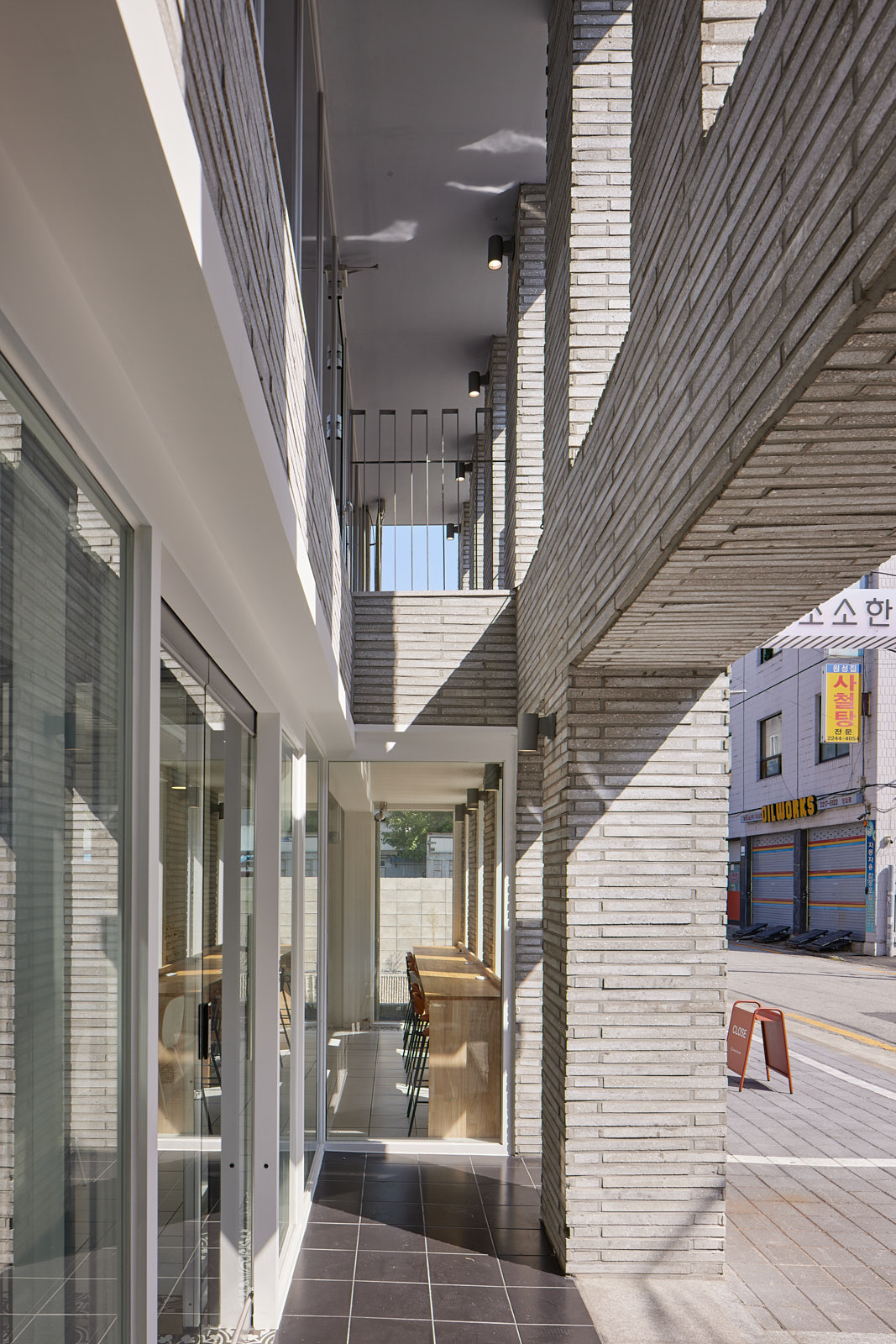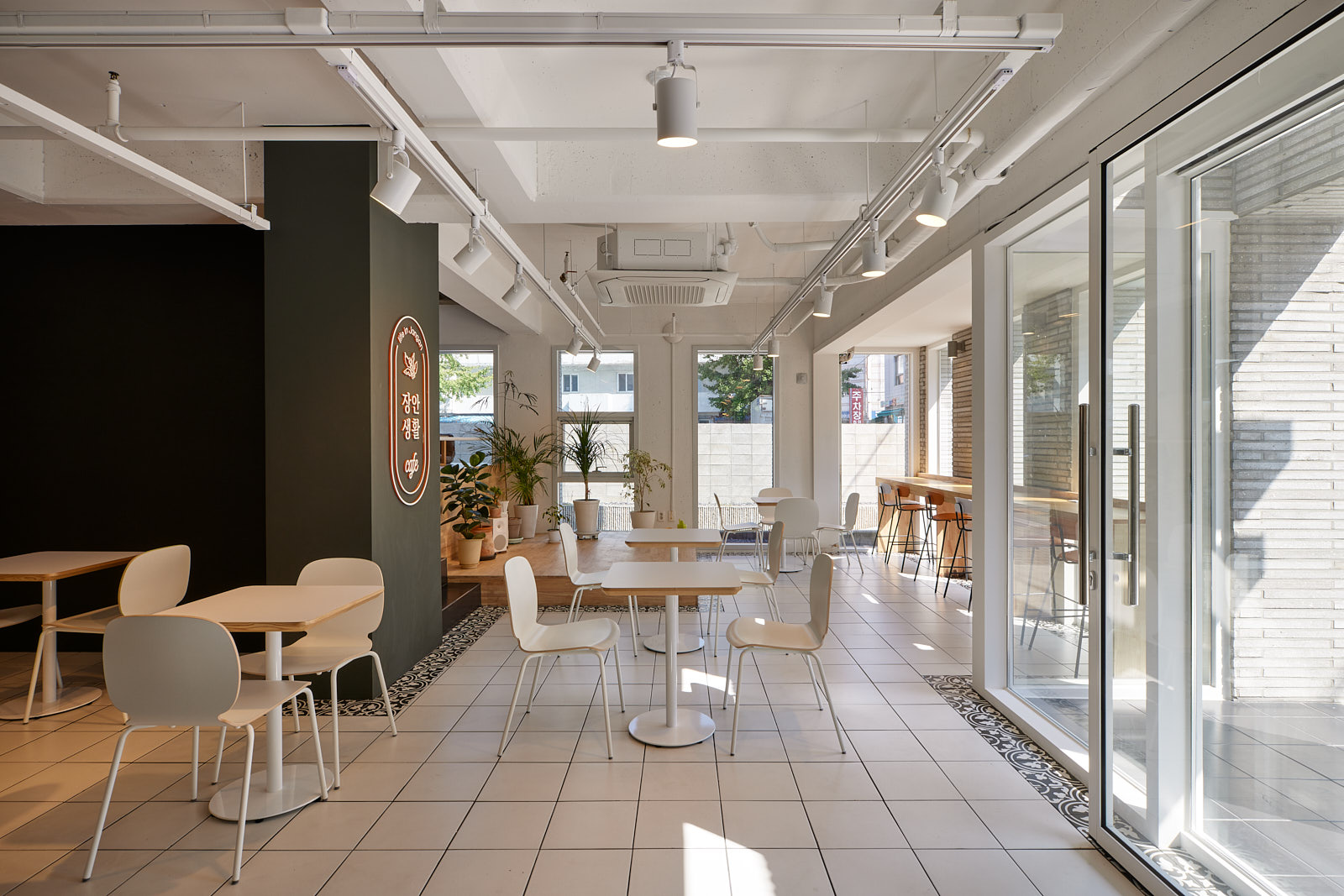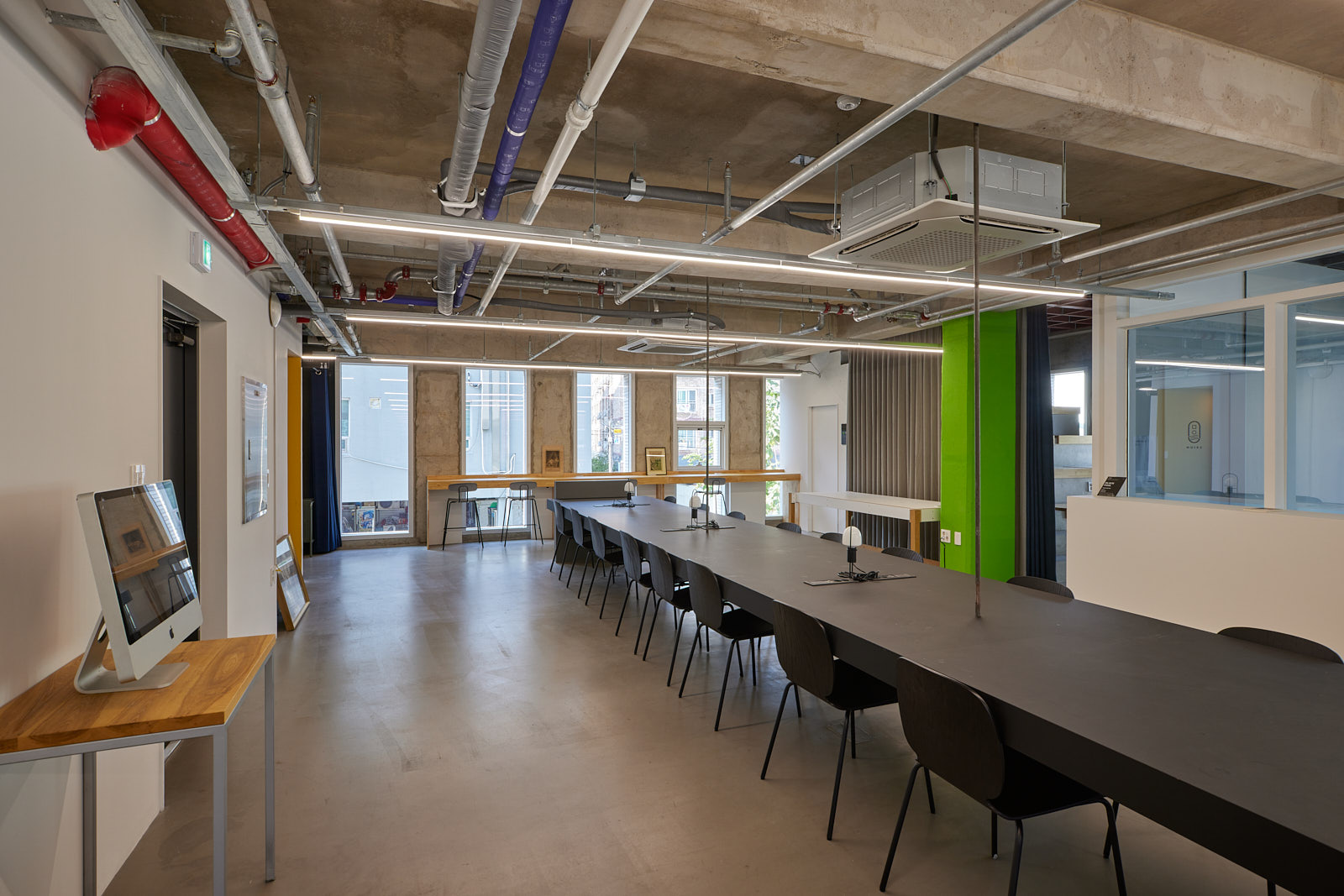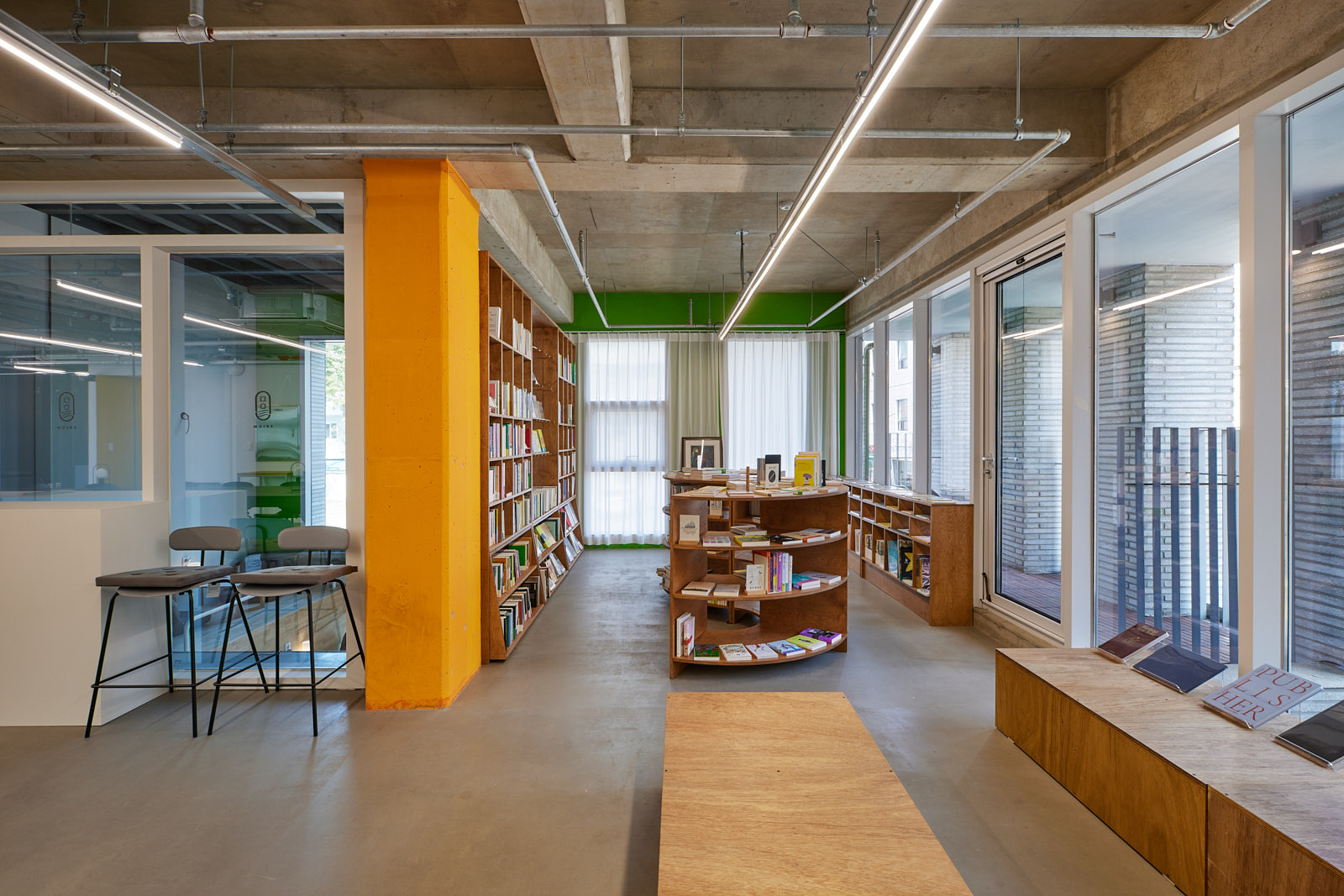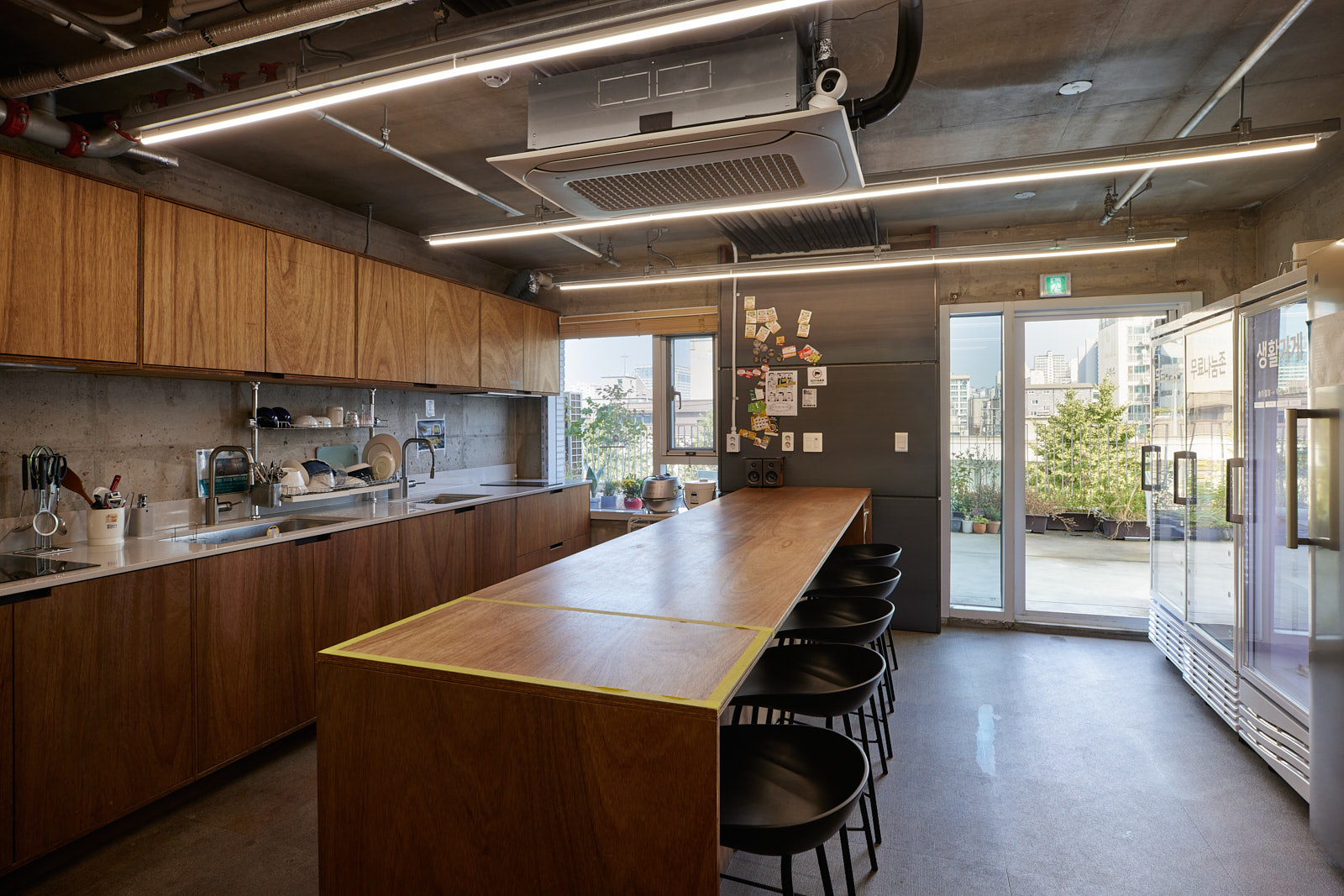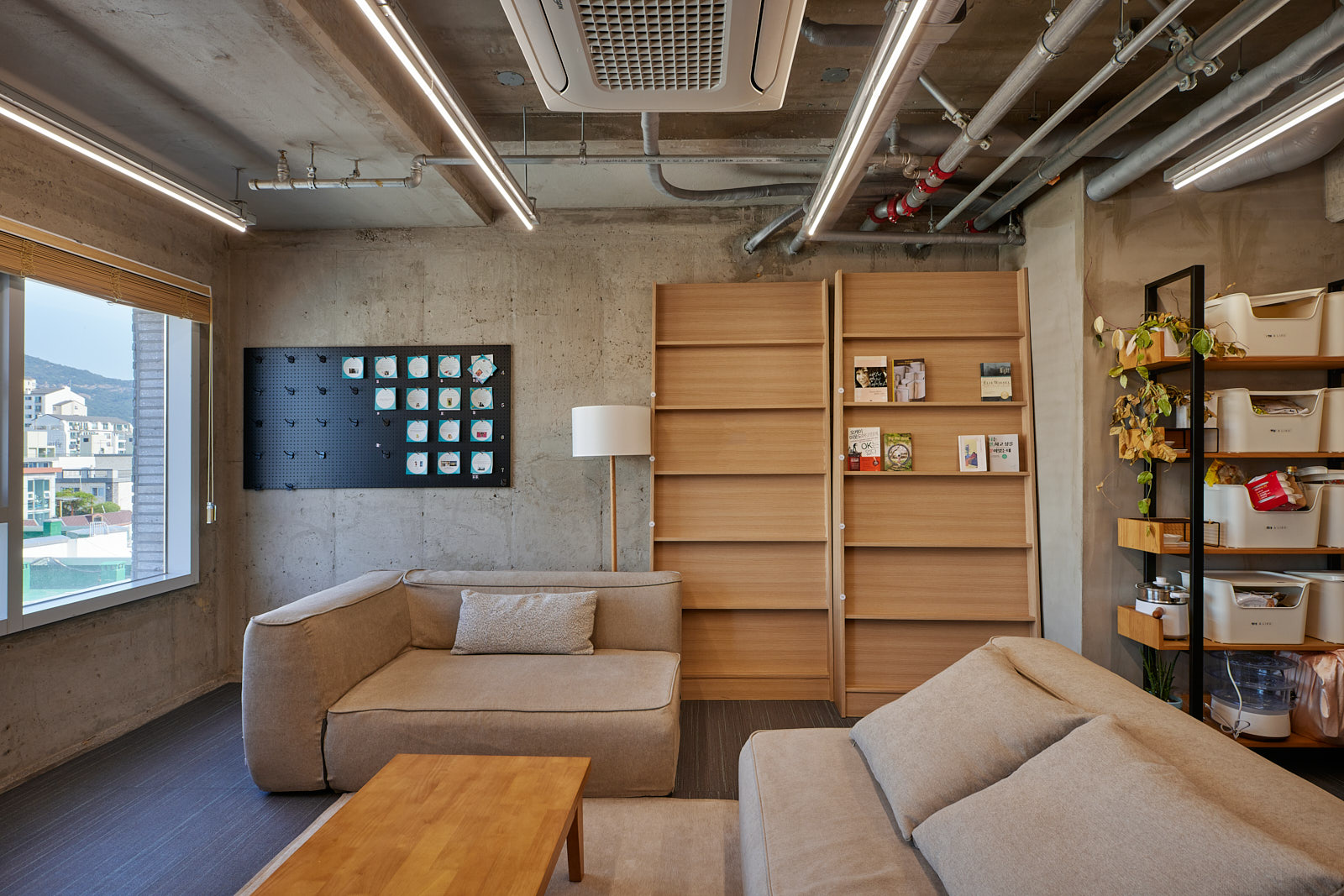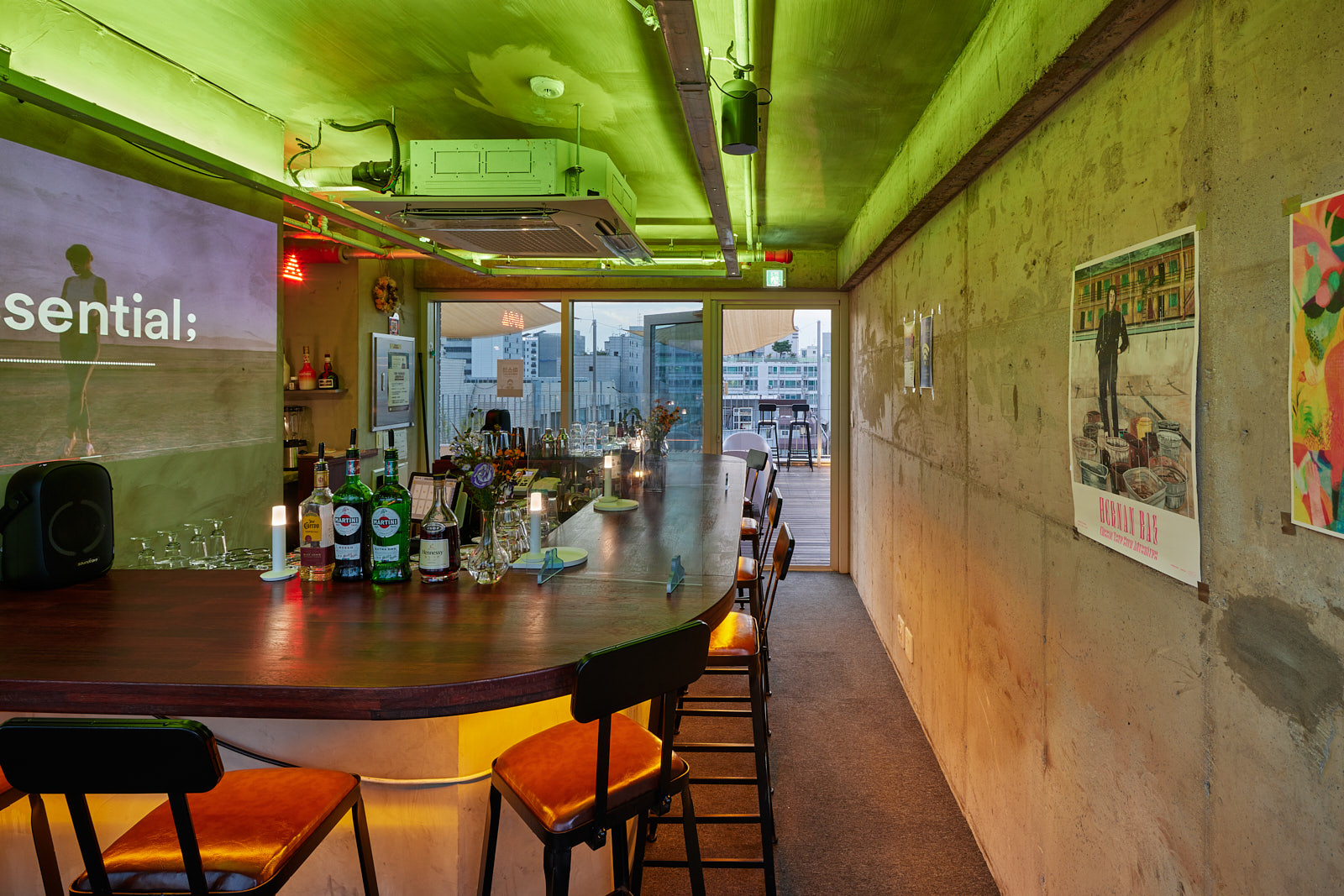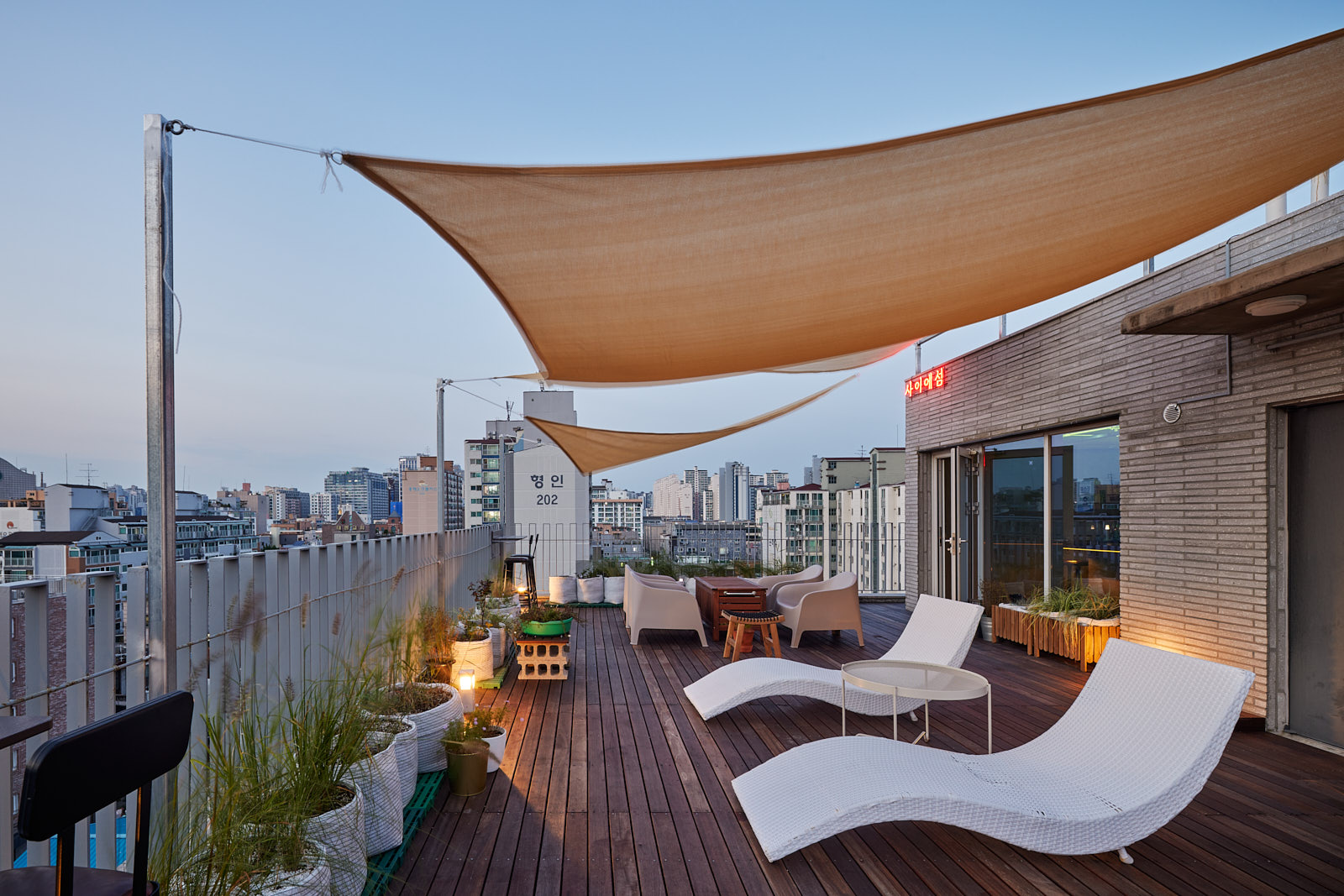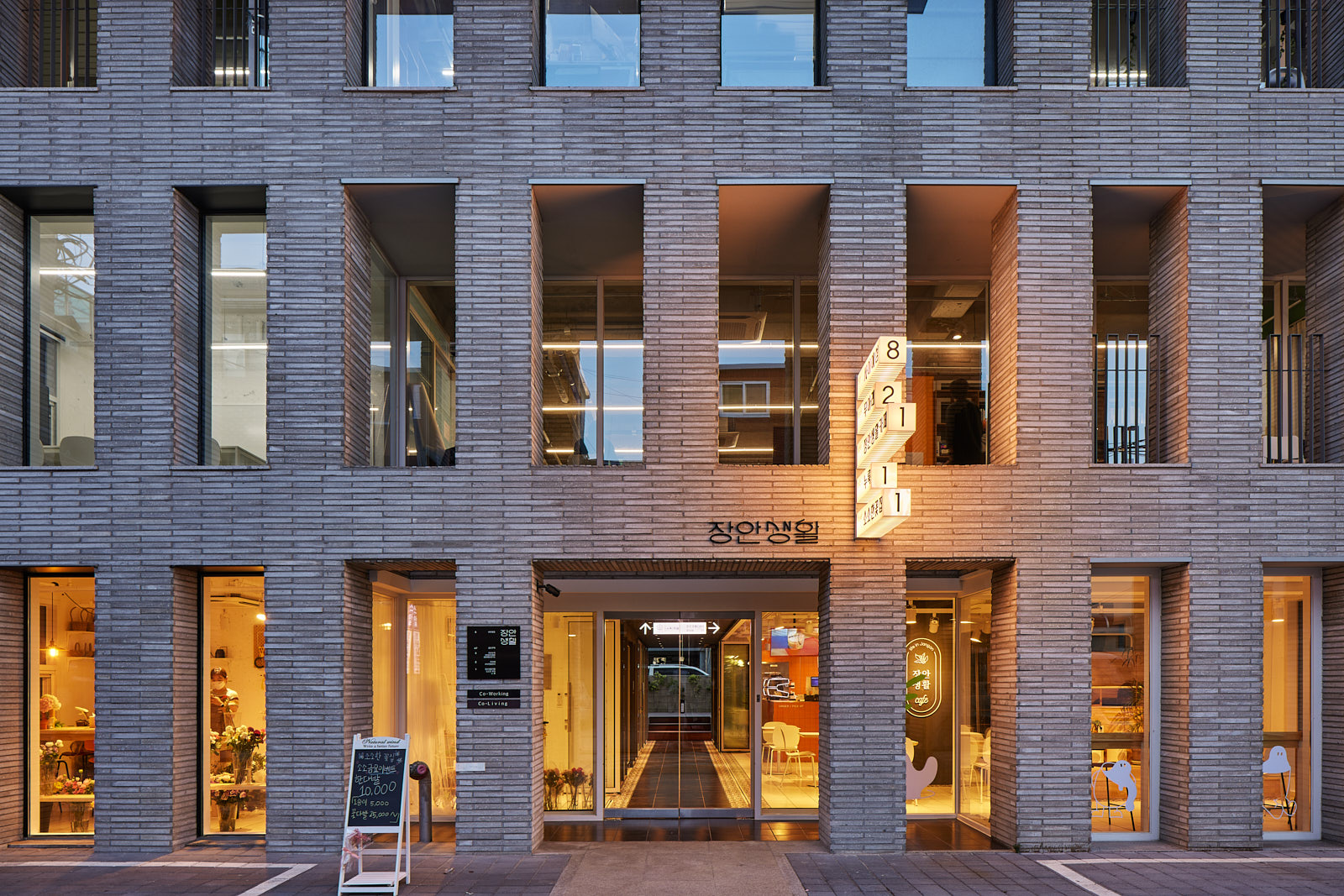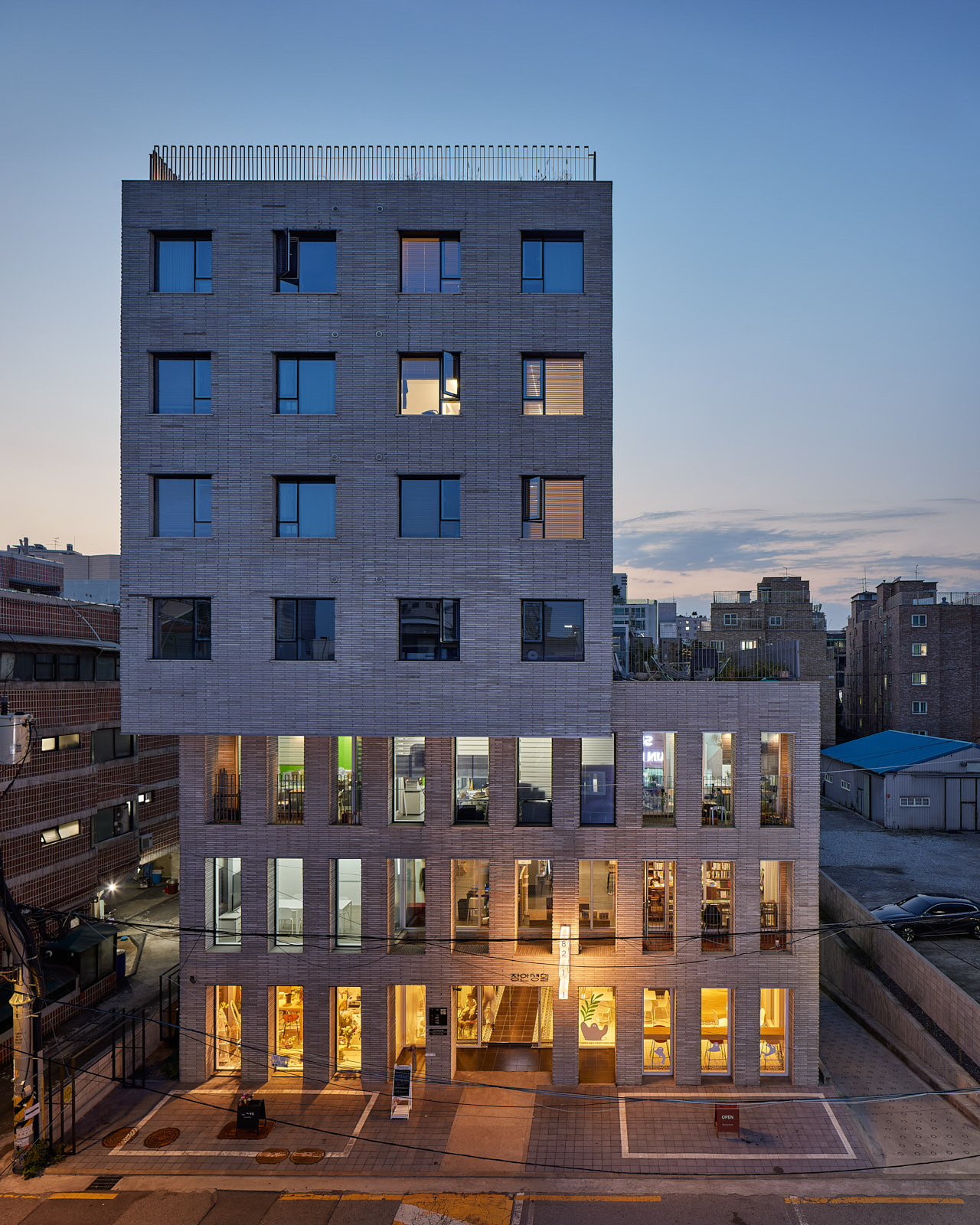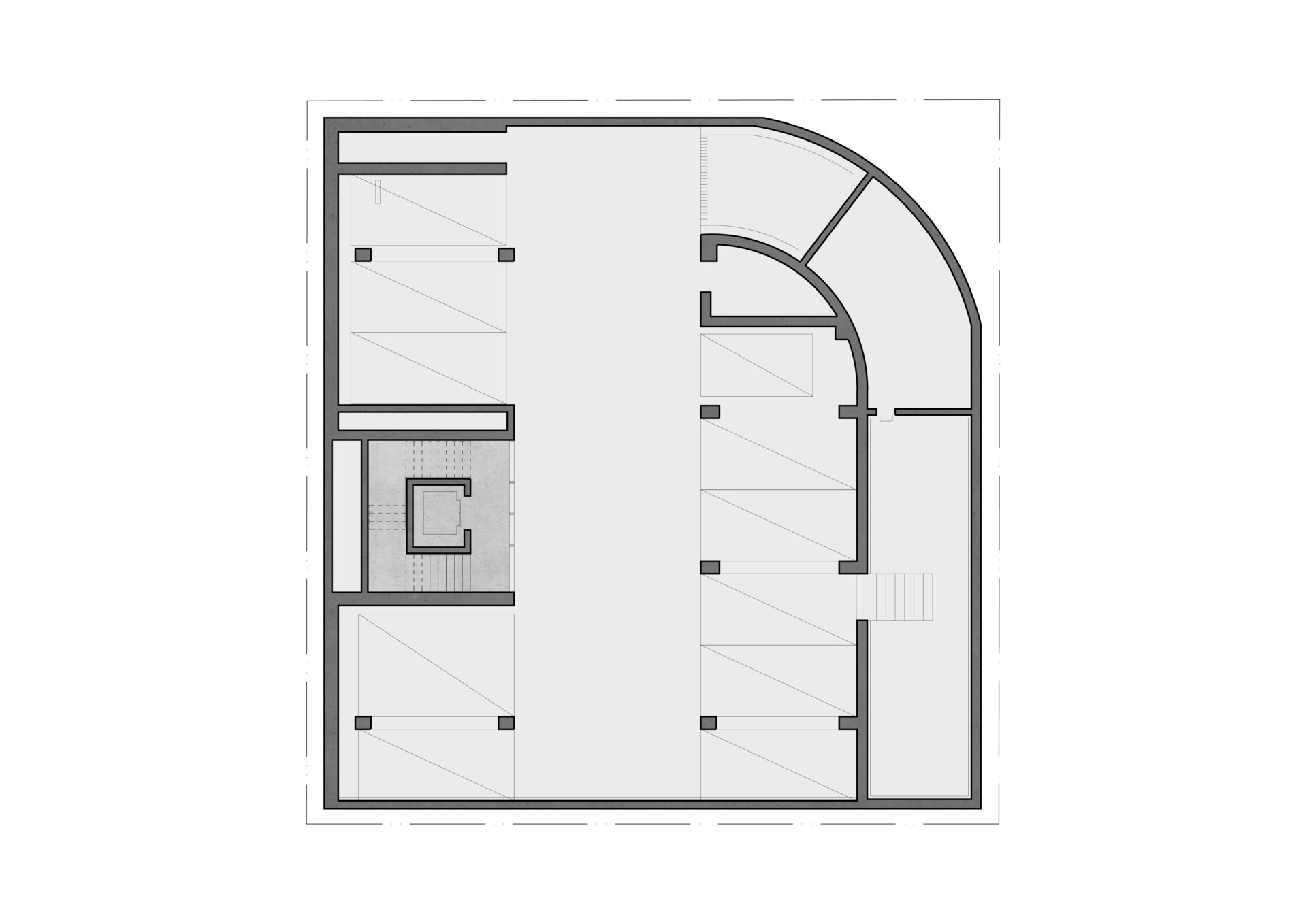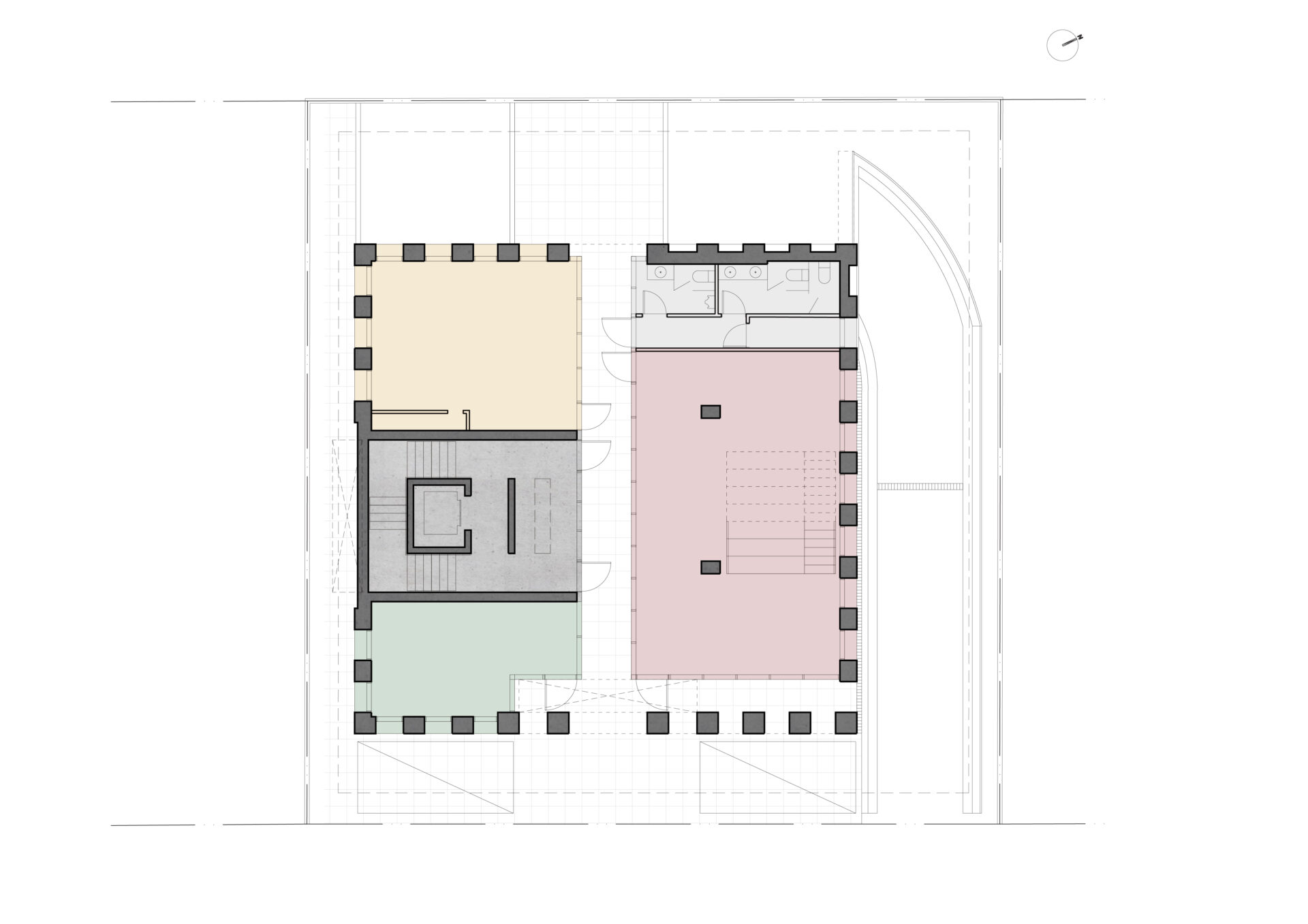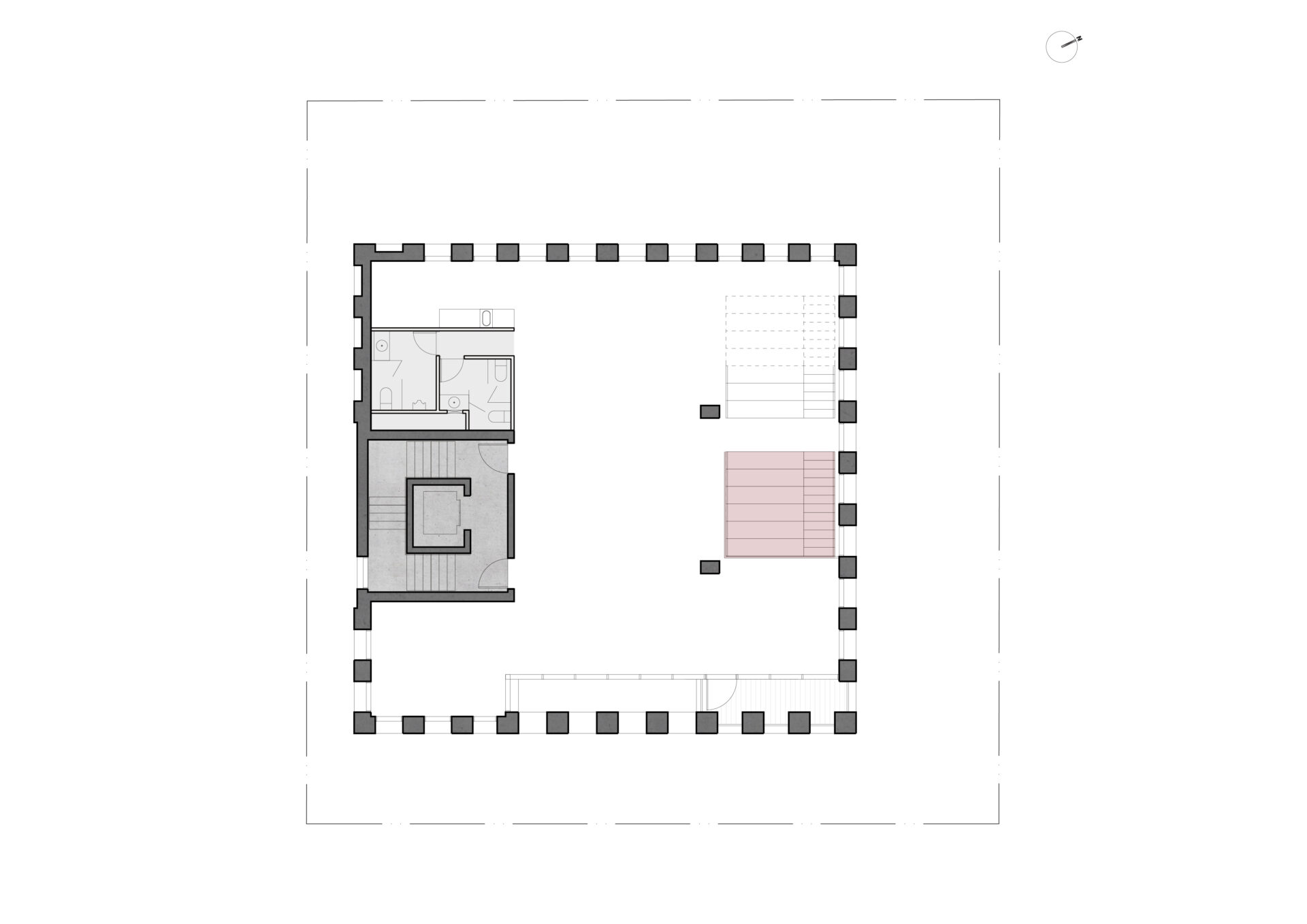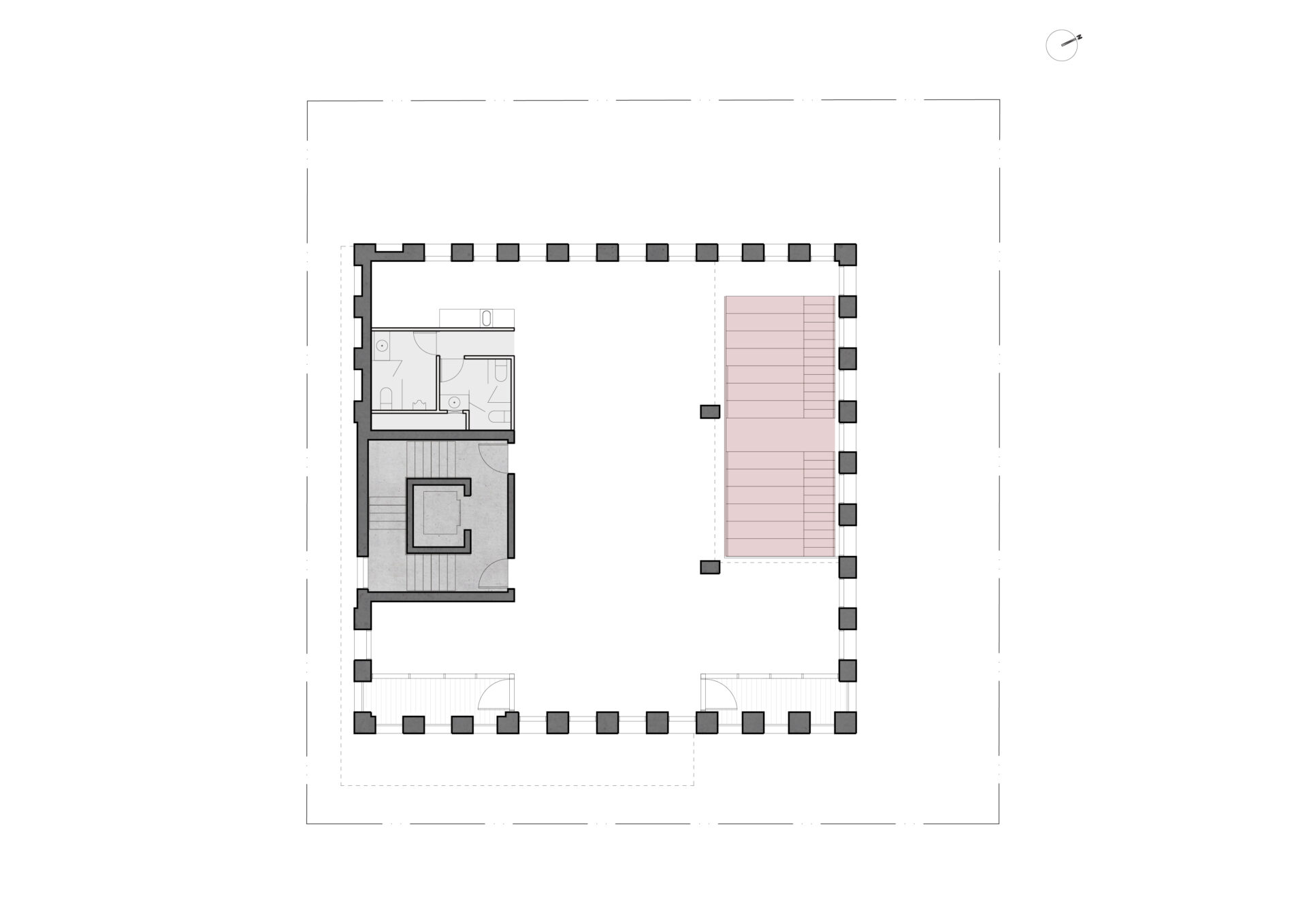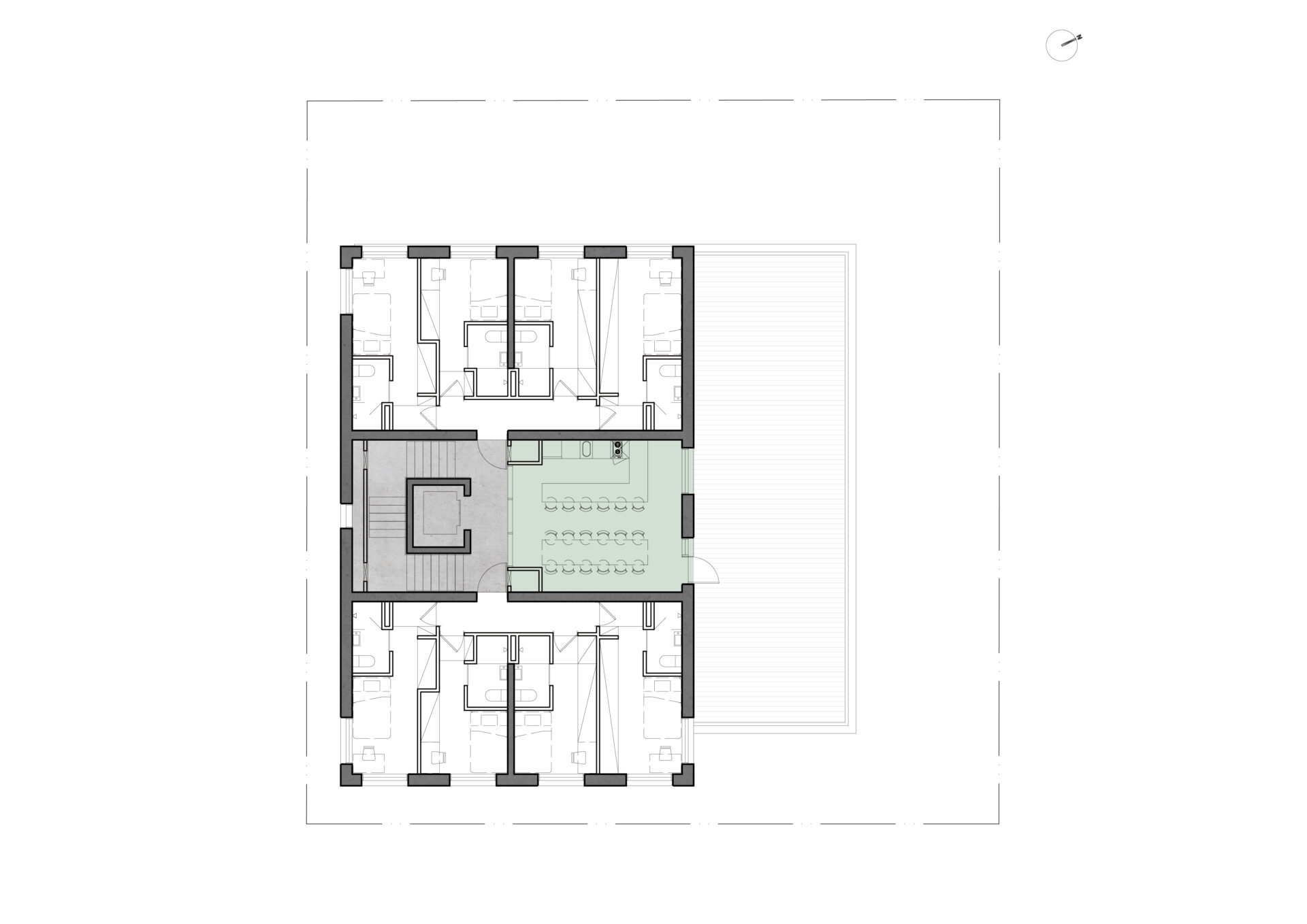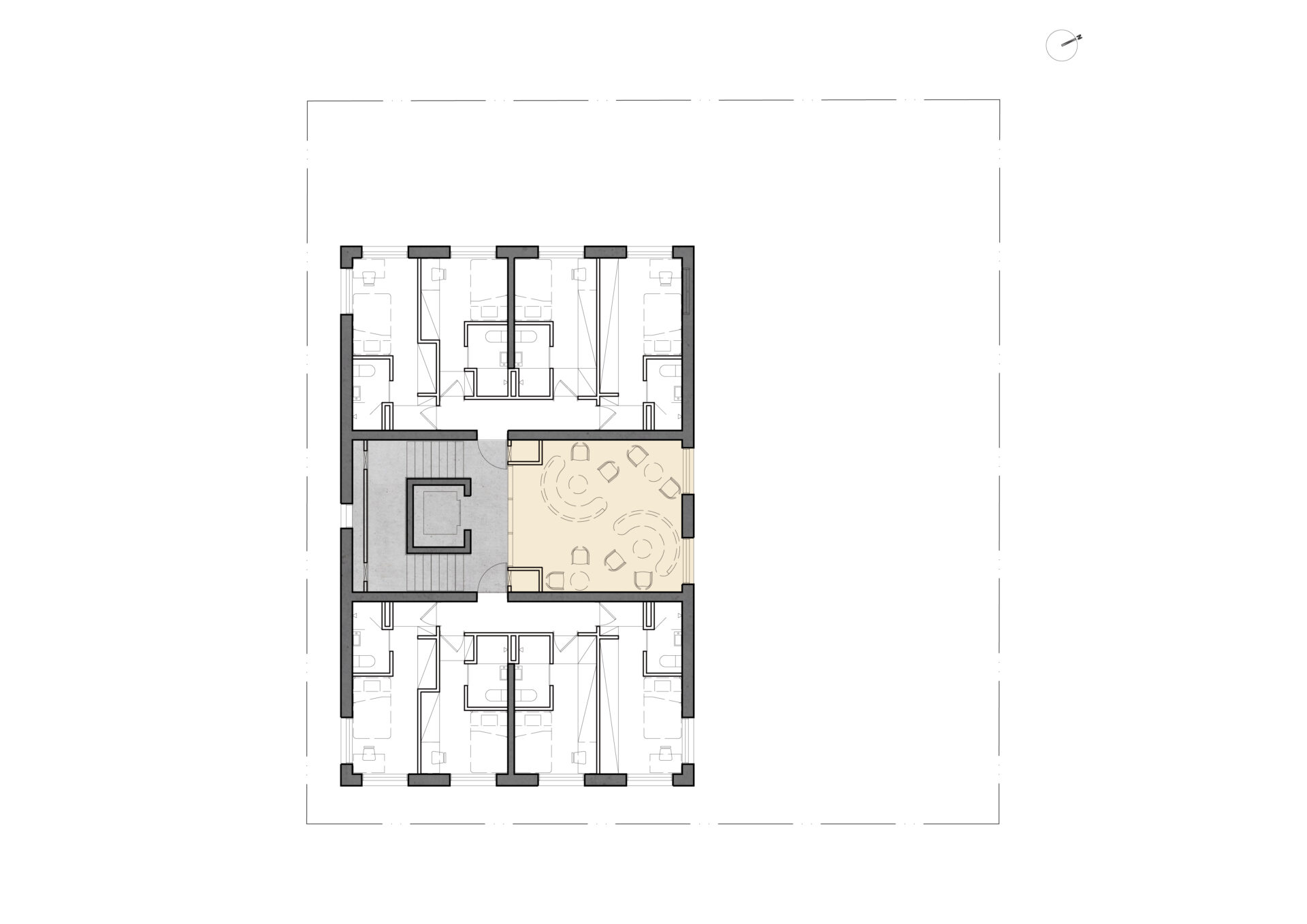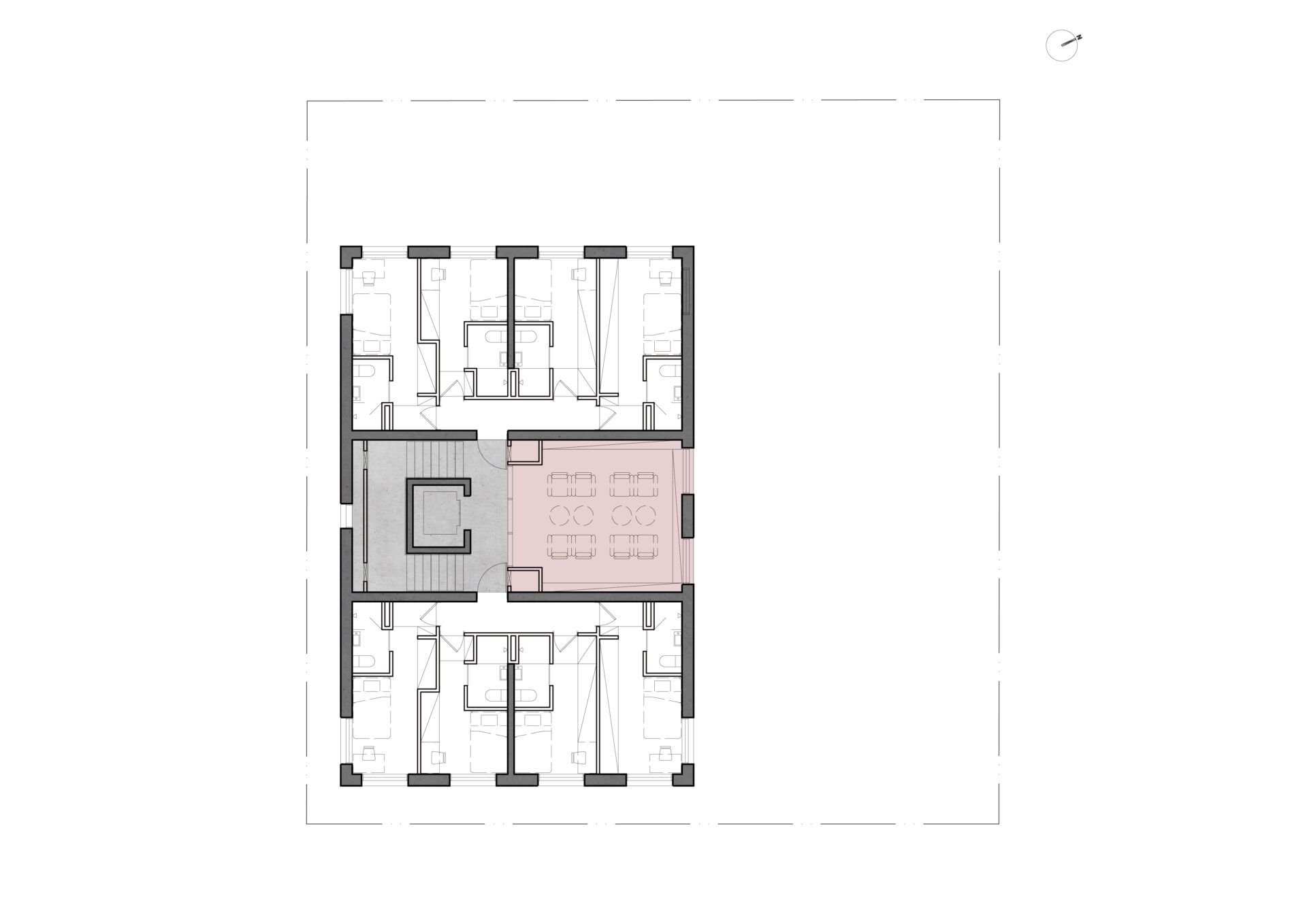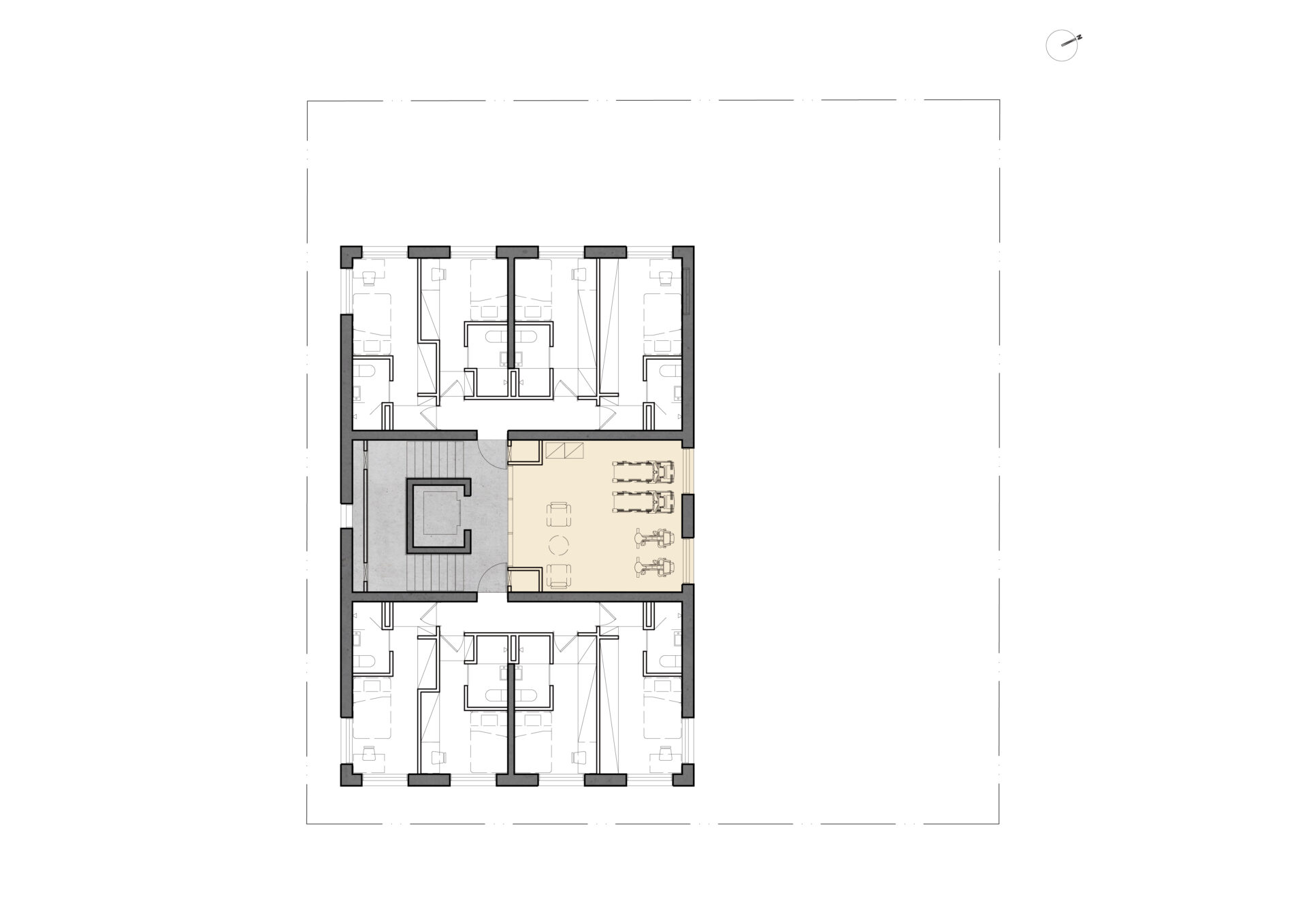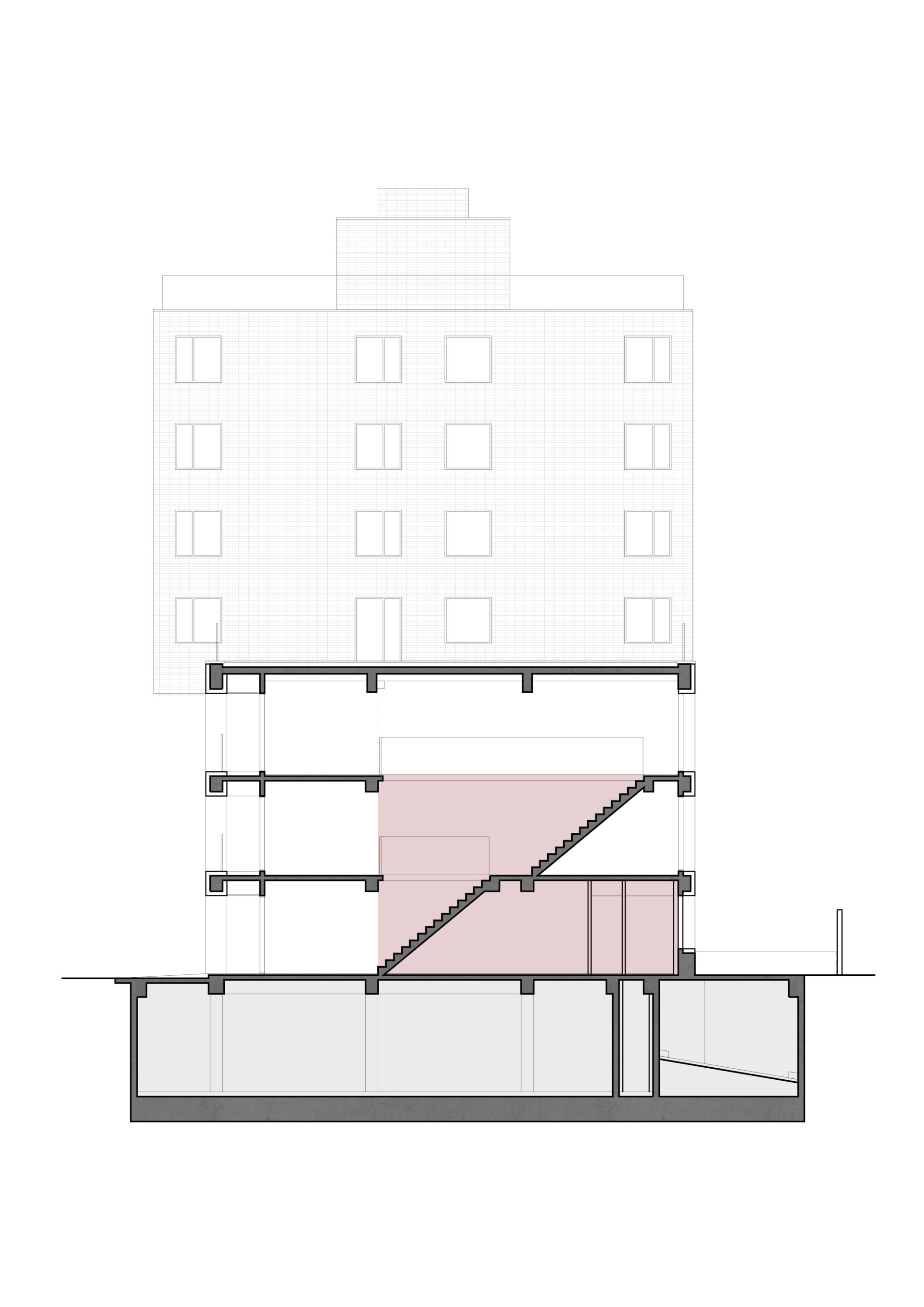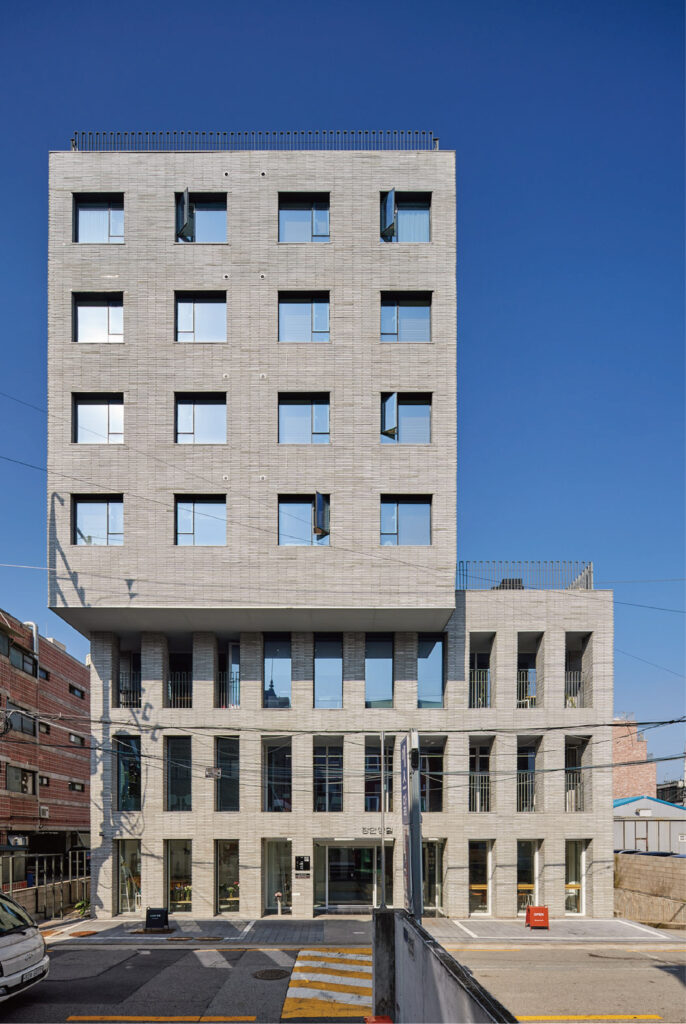
장안생활
Design Director : L + K
Project Designer : L
Scale : 지하 1층 / 지상 8층
Area : 1,700sqm
Client : 아이부키
Principal use : 쉐어하우스, 쉐어오피스, 상가
Photo : 노경
장안생활은 도시재생 사업의 지원을 받아 진행된 프로젝트이며, 서울시 동대문구 장안동에 위치한 공유 사무실, 공유 주택 건물입니다. 520sqm의 대지면적에 제3종 일반주거지역이라는 용도지역의 법적인 한계를 극복하기 위해 복합적인 프로그램으로 기획되었습니다. 1층은 상가(카페, 플라워샵), 2-3층은 쉐어오피스, 4-7층은 쉐어하우스, 8층은 bar로 개발된 건물입니다.
1층 상가는 뒷마당을 크게 가지고 있고, 가운데 통로를 통해 뒤 마당까지 연결되며, 가운데 통로를 향해 상가는 모든 창을 열 수 있도록 계획되어 있습니다. 1층부터 3층까지는 내부 계단식 공적 공간으로 연결되어 있으며, 각 층 전면과 이면의 별도의 발코니가 있습니다. 4-7층의 쉐어하우스는 각 층마다 별도의 프로그램으로 구성된 공유 공간이 있고, 주택이 시작하는 4층에는 입주민 전체를 위한 커다란 테라스가 있습니다.
건물은 이 모든 프로그램적인 복합성을 하나의 질서화된 입면 안에 품고 있습니다. 전체적으로 용도 불명의 모습을 가진 건물의 형태는 두 가지로 분리되며, 이는 저층부 오피스와 고층부 주택 부분으로 나누어집니다. 저층부는 건물 외벽면과 창호 면이 서로 교차되며 기둥과 개구부 사이의 간극에서 변형됩니다. 건물의 사용 방식인 프로그램을 하드웨어와 직선적으로 연결하고 외부에 노출하는 방식과는 다르게, 사람들과 조명이 이 건물의 사용 방식을 은은하게 드러냅니다. 내부는 다양한 컨텐츠를 담는 것과 대비적으로 날것의 존재감을 가진, 물체의 질감을 강하게 살린 콘크리트 노출, 구로 철판, 그리고 합판으로 마감되어 있습니다.
Jangan Life is a project supported by the Urban Regeneration Project of Seoul, and is a shared office and shared housing building located in Jangan-dong, Dongdaemun-gu, Seoul. It was planned as a complex program to overcome the legal limit of the use area of a type 3 general residential area on a land area of 520sqm. The building was developed as a commercial space (cafe, flower shop) on the 1st floor, a share office on the 2nd and 3rd floors, a share house on the 4th and 7th floors, and a bar on the 8th floor.
The commercial space on the first floor has a large backyard, and is connected to the back yard through the middle passage, and all the windows are planned to open towards the middle passage.
The first to third floors are connected by an internal staircase to be used as public space, and there are separated balconies in front and behind each floor. The share house on the 4th and 7th floors has a shared space composed of a different program on each floor, and the 4th floor, where the house starts, has a large terrace for all residents.
The building embraces all this programmatic complexity in one ordered façade. The overall shape of the building program is unpredicted and is divided into two parts. The low-rise office part and the high-rise residential part. The low-rise part intersects the building exterior wall and windows and deforms in the gap between the column and the opening. Unlike the way of directly connecting the program with the building and exposing it to the outside, people and lighting subtly reveal the way the building is used. The interior is finished with exposed concrete, iron plate, and plywood that strongly emphasizes the texture of the object, which has a raw presence in contrast to containing various contents.
Other projects


